
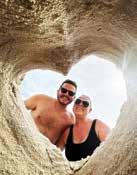

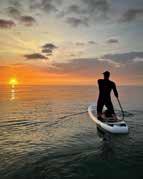
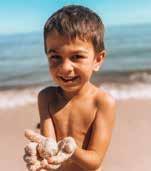


Franklin County, Florida Visitor Guide ALLIGATOR POINT APALACHICOLA CARRABELLE EASTPOINT ST. GEORGE ISLAND www.FloridasForgottenCoast.com
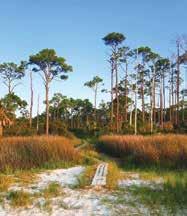
Welcome to Franklin County and the coastal communities of Alligator Point, Apalachicola, Carrabelle, Eastpoint and St. George Island. Cover photo by @strangewonderfullife
Contributing photographers
John B. Spohrer, Royce Rolstad, Forrest Wesson, Richard Bickel, Stephanie Parker, Palmer Philyaw, Lou Kellenberger, Maggie Fuller, Tim Harbison, Bob Zumwalt, Tsinoul, Clayton Mathis, Rusty Amos, David's Adventures
Social Media photographers:
@OlivertheGoldenSnitch @saltwatertaffycottage
@strangewonderfullife
@dancingpear_
@christieannphotography @sparklepopfizzclink @andy.kilkenny
@capt_ld_hatfield
@carrabelleflyingclub
@bigwheelvanlife
@seizethebaycottage @darling_dottie @bebenntravels @zipkarendearden @bsm0110
@dorwageld @nataliagumbs
@lemonssqueezetheday
Additional Photography: VISIT FLORIDA

Produced by the Franklin County Tourist Development Council, 731 Hwy 98, Eastpoint, FL 850-670-3474
Floridasforgottencoast.com info@Floridasforgottencoast.com
Like us on Facebook and follow us on Twitter
facebook.com/franklintdc
twitter@franklintdc

In Franklin County you’ll find a unique coastal culture with a fascinating history and the freshest seafood on the Gulf Coast!
Welcome! 2
Royce Rolstad

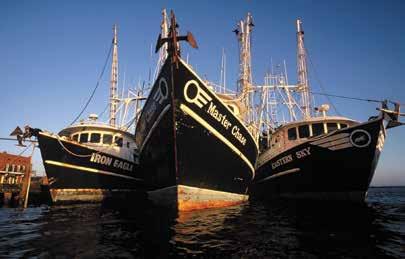



FloridasForgottenCoast.com 3 Contents ABOUT THE AREA Alligator Point 4 Apalachicola 6 Carrabelle Area 8 Eastpoint 10 St. George Island 12 THINGS TO KNOW Places To Stay 14 Restaurants 18 Shopping 20 History 22 Seafood Heritage 29 Pet Friendly 33 THINGS TO DO Arts and Culture 21 Lighthouses 27 Beaches 30 Fishing 34 Boating 37 Paddling 38 Camping 40 Hiking 42 Golfing 43 Birding 44 Parks and Scenic Areas 46 Events and Festivals 47 David's Adventures Richard Bickel
Stephanie Parker
Alligator Point
Sea oat-covered sand dunes, marsh habitats and easy accessibility make Alligator Point perfect for birding and wildlife observation.

ASee Page 14
Places to Stay
See Page 18
Places to Eat
See Page 30
Things To Do
lligator Point is a pristine, rural beach community located at the easternmost end of Franklin County. Alligator Point is accessed via US Highway 98 and County Road 370 and is about an hour south of Tallahassee. This narrow beach peninsula boasts eight miles of quiet shoreline and unparalleled fishing. The “Point,” as it is referred to by locals, is nestled between the Gulf of Mexico and Alligator Harbor, a pristine estuary known for its clam harvesting. This cozy coastal community is a snapshot of vintage coastal Florida. Alligator Point features a range of vacation rental options on the gulf and bay. The area features a full service
marina with fishing charters. There are several public access areas along the beach and two boat ramps on the bay side. A unique feature to Alligator Point is the Bald Point State Park, a naturally preserved state park. The convergence of Ochlockonee Bay and Apalachee Bay produces diverse habitats and makes it an excellent vantage point for fall and spring migrations of birds and butterflies. The 50,000 acre State Park is also an outstanding observation point for yearround wildlife residents such as black bear, white-tailed deer, coyotes, bobcats and hosts of resident birds. The dayuse facilities at the park include picnic pavilions, restrooms and a fishing dock.
4
4 About The Area
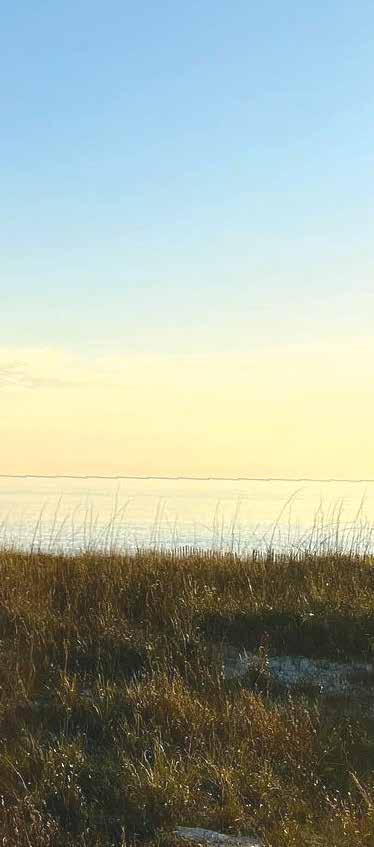
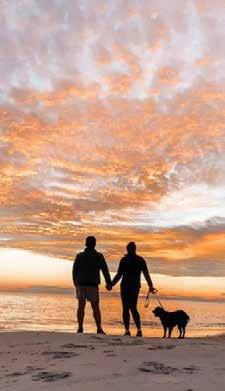
See Page 59 for Activities
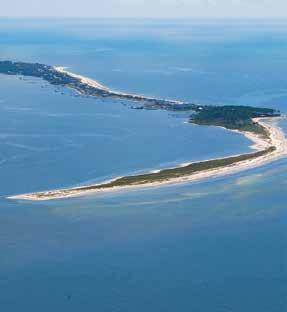
The Bald Point State Park features beaches, bicycling, birding, canoeing, fishing, hiking, kayaking, swimming and wildlife viewing.
The nearby St. Marks Wildlife Refuge is also a popular visit for wildlife enthusiasts.
Alligator Point’s protected bay, Alligator Harbor Aquatic Preserve, encompasses 14,366 acres and serves as a nursery for many game fish species such as grouper, snapper, cobia, tarpon, and redfish. Miles of beaches and an abundance of shallow bays, marshes and fresh water rivers provide great outdoor opportunities including deep sea and sight fishing, boating, kayaking, bird and wildlife viewing.
On Alligator Point, you can enjoy uncrowded beaches, cast a rod, catch shrimp, enjoy sunsets, collect shells or just gather your thoughts. The absence of noise and glaring lights makes for prime relaxation and exquisite stargazing. Accommodations range from beachfront vacation homes to modest cottages. Many vacation rentals are pet friendly.
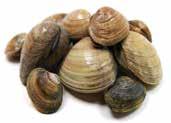
Clam Harvesting
Alligator Harbor is unique because it’s one of the few harbors in Florida that’s not fed directly by a river, which means the salt content of the water is almost the same as the Gulf of Mexico. The salinity levels allow for the successful clam harvesting within the harbor.
point of interest
Wander the woods in the easternmost end of Franklin County and you may find an interesting chatterbox in the trees. Rare white squirrels make their home in eastern Franklin County and neighboring Wakulla counties.
According to experts, white squirrels are a white version of the eastern grey squirrel - a genetic anomaly due to a mutated gene. Unlike albino squirrels which have red eyes, North Florida’s white squirrels have dark eyes, generally tend have a gray patch on their heads and a “dorsal stripe” down their backs.
These unique squirrels can be found throughout North America and Canada. We’re happy they call us home too!
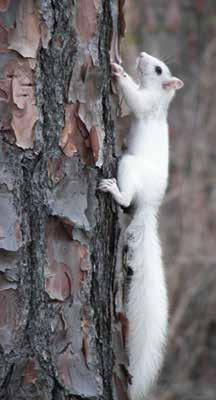
FloridasForgottenCoast.com 5
Tim Harbison
Stephanie Parker
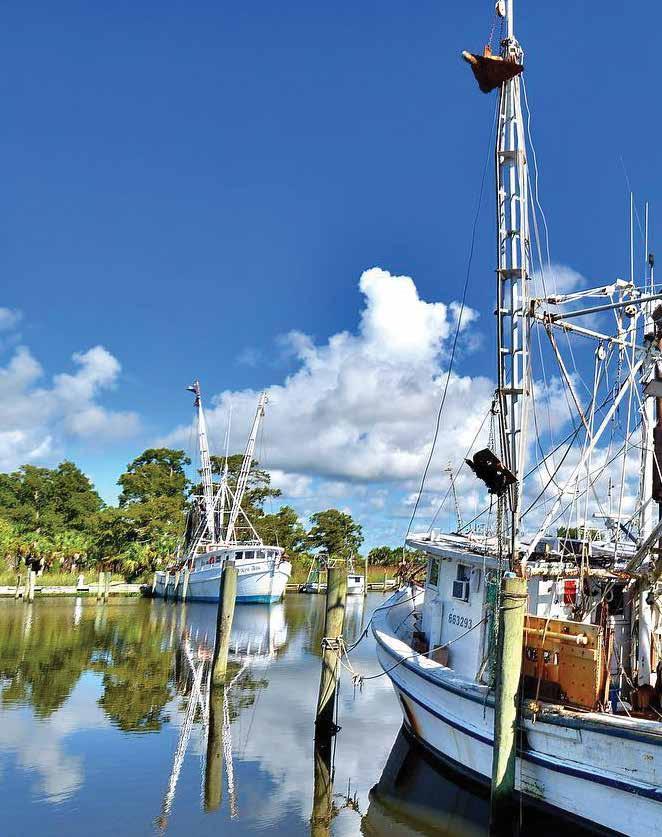
6
See Page 14 Places to Stay
See Page 18 Places to Eat
About The Area
See Starting Page 30 Things To Do
Palmer Philyaw
Apalachicola
Apalachicola offers maritime history and a working waterfront with restaurants serving the freshest seafood on the coast.
If you’re in Apalachicola, you’re among friends. In fact, this small coastal city at the mouth of the Apalachicola River is actually named after an Indian word meaning “land of friendly people.” Here you’ll catch a glimpse into old Florida’s maritime history in its bustling seafood houses, weather-worn shrimp boats and stately brick buildings that once served as 19th century chandleries, net factories and warehouses. The town has managed to retain its rusty crusty charm and embrace a new hip persona in the form of upscale restaurants, eclectic boutiques, galleries and a growing number of music venues that tuck themselves into the brick and tin-roofed warehouses that dominate the downtown district.
Seafood is served everywhere and in every way – slurp a dozen overlooking the river or tuck into the town’s only microbrewery.
The town is small and very walkable. There are several parks, guided nature trails and downloadable self-guided walking tours. Stroll the canopy-shaded sidewalks of Apalachicola’s distinguished Historic District replete with the regal homes of past sea captains, river pilots and sponge divers. Apalachicola's diverse and colorful past remains visible today as you stroll along the wide tree-lined streets where picturesque Victorian homes display the charm of years gone by. There are more than 900 historic homes, buildings and sites in the city’s Historic District.
Eclectic boutiques, galleries and restaurants are tucked into nooks and crannies throughout the historic downtown commercial district. The town features meticulously restored hotels and B&Bs as well as luxury waterfront
accommodations. Looking for a treasure to take home? Spend time browsing through unique galleries, stores and antique shops.
Apalachicola’s history and maritime culture are matched by the area’s bountiful natural resources. The Apalachicola River and Apalachicola Bay provide great fishing opportunities for both fresh and salt water fishing buffs. Outdoor enthusiasts can explore the endless bays and waterways by kayak, canoe, riverboat or sailboat while in Apalachicola.


point of interest
The seafood industry in Apalachicola is as important today as it was more than 175 years ago. Oysters were Apalachicola’s first seafood industry, sold locally as early as 1836. Apalachicola's seafood industry has most significantly shaped the culture and maritime heritage of Apalachicola and it is the seafood industry that anchors a growing nature-based tourism industry throughout the region.

In an effort to honor the county's maritime heritage, Franklin County leaders are creating a maritime heritage museum to display maritime-related documents, artifacts and displays that accurately reflect Franklin County’s maritime heritage. The museum, scheduled to open in late 2024, is part of the Olan “Buddy” Ward Park located west of Apalachicola on U.S. 98 along the bayfront. The park currently features an observation boardwalk, boat and kayak launch facility and picnic tables. The exhibits will be located in and around a former commercial seafood processing plant within the park.


FloridasForgottenCoast.com 7
@nataliagumbs
Tsinoul
Carrabelle
With a natural deep-water harbor and easy access to three rivers, Carrabelle is a salty attraction to sailors, kayakers and boaters of all ages. A renowned golf resort nearby makes this the perfect outdoor getaway.
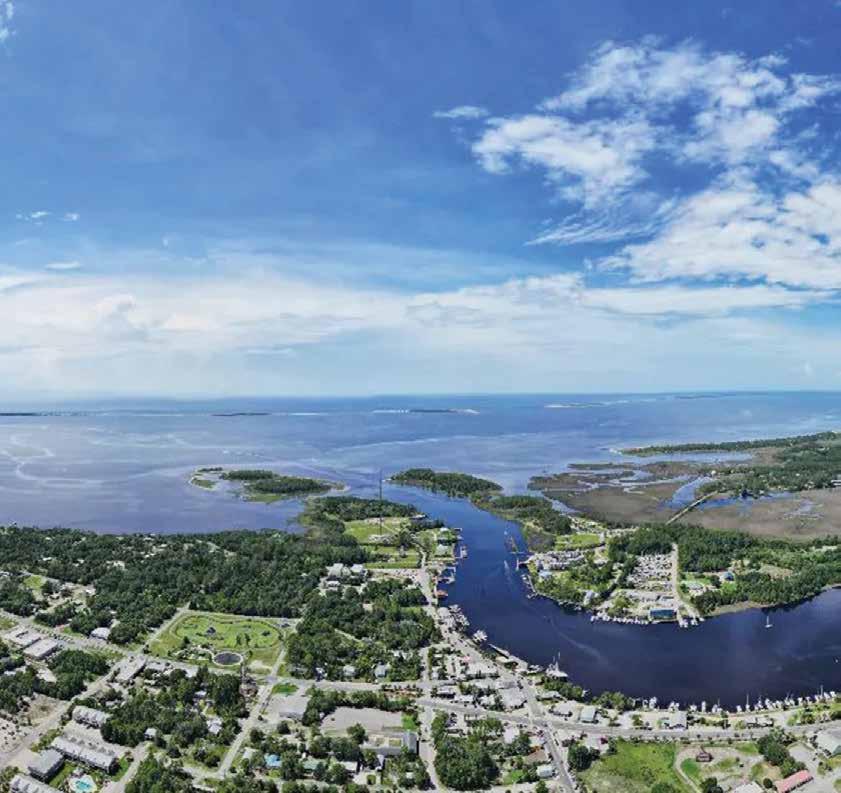
See Page 14
Places to Stay
See Page 18
Places to Eat
See Starting Page 30
Things To Do
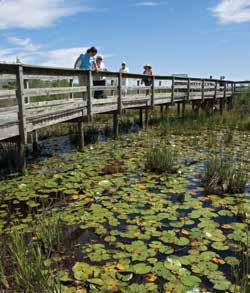
@bigwheelvanlife

About The Area
8
@carrabelleflyingclub
Pat Canova
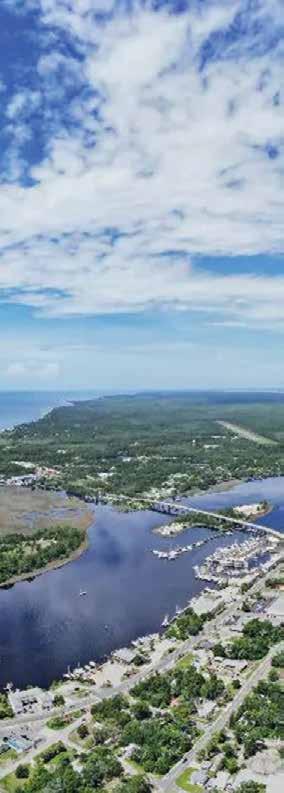
Considered the Gateway to the Gulf for its easy access to offshore fishing and boating, Carrabelle is a naturalist’s paradise. Uncrowded, white-sand beaches are perfect for family vacations and the fishing is unsurpassed. Unpretentious and friendly, Carrabelle is the place to experience small town nostalgia. You’ll feel the pride of a patriot when you visit the Camp Gordon Johnston Museum that tells the story of how our troops trained on the salty beach of Franklin County for the D-Day Invasion of Normandy in World War II. The nearby Crooked River Lighthouse reminds you of the town’s maritime importance.
Fishing and Boating
People come to Carrabelle not only for fabulous fishing but also to sail, snorkel, scuba dive, scallop, play on the beaches or to just steal away from the real world for a while. Wildlife is plentiful here in Carrabelle. It is not unusual to spot a deer, fox, blue heron, pelican or even a family of black bears at play. If luck is really with you, you may be entertained by local dolphins when walking the beach or riding in a boat.
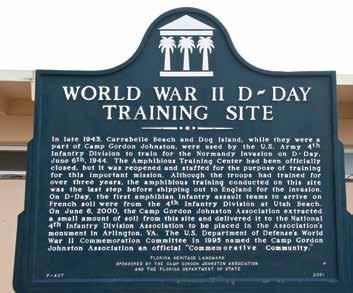
point of interest
There is a phone booth along thehighway in Carabelle regarded as the “World’s Smallest Police Station.” Built in 1963, it was originally a police phone box that evolved into the small town's official police station for a time. The tiny office has earned a fair amount of fame for its oddity, appearing on several television shows including “Ripley’s Believe It or Not!”
Long abandoned as a functioning police station, the original structure has been replaced over the years. Today a replica of the booth is on display on U.S. Highway 98 across the street from the Carrabelle Chamber of Commerce office.

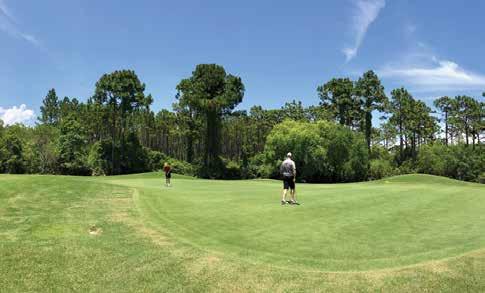
FloridasForgottenCoast.com
9 @zipkarendearden
Eastpoint

Eastpoint is the seafood central hub of Franklin County and probably one of North Florida’s most authentic fishing communities. Located across the bay from Apalachicola and St. George Island, Eastpoint features rustic seafood houses and weather-worn docks where oystermen haul their heavy burlap bags of freshly harvested Apalachicola Bay oysters to be washed, shucked, packed and transported across the country. Most of the county’s commercial oyster industry has traditionally been concentrated here within about a mile along coastal Highway 98 overlooking St. George Sound and Apalachicola Bay. The nutrient-rich shallow bay system just offshore of this scenic fishing hamlet supports the lion's share of the county’s commercial fishing industry and serves as vital habitat for much of the region’s marine life.
Eastpoint is an authentic fishing community with a heart as big as the bay. Here you can buy fresh local seafood from family-owned markets and restaurants operated by families four generations deep.

The Eastpoint area features a full service RV park and an historic fishing lodge tucked along the shores of East Bay. There are two boat ramps and several bait and tackle shops that stock everything you need to begin a fishing adventure. Eastpoint also features a popular fishing pier that parallels the bridge to St. George Island - bump your bait along the pilings and you may land sheepshead and flounder here.
Eastpoint is considered the Gateway to St. George Island. To the north, Eastpoint is a gateway to the Apalachicola National Forest and Tate’s Hell State
Forest through scenic Highway 65 – part of the Big Bend Scenic Byway. Eastpoint is also home to the Apalachicola National Estuarine Research Reserve (ANERR) and Visitor Center. Considered one of the state’s premier research and education facilities, the ANERR facility features a visitor center complete with fish tanks, walking trails, interactive displays and ongoing public education programs and activities.
See Page 14
Places to Stay
See Page 18
Places to Eat
See Starting Page 30
Things To Do
10About The Area 10
Forrest Wesson
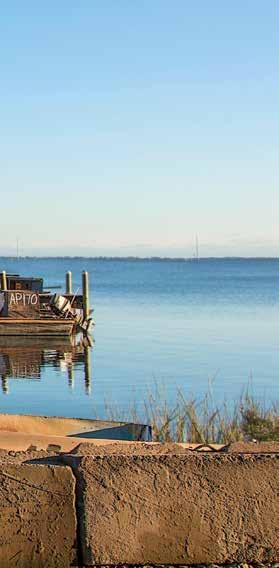


Oystermen are Farmers of the Bay
Oystermen have traditionally harvested oysters in Franklin County from more than 7,000 acres of public oyster "bars" and 600 acres of private leased bars in Apalachicola Bay. Public bars are divided into "winter" bars, which are harvested from October through June and "summer" bars which are harvested from July through September. Over the past several years, the bay has supported hundreds in the seafood industry in Franklin County, whether it be harvesters, dealers or seafood restaurants and retailers.
Oystermen harvest the oysters today in the same manner they have for a century. From small wooden boats 20-23 feet long, using tongs that look like two rakes attached scissor-style, the oystermen heft the oysters to the surface.
Oysters are brought aboard and sorted on a culling board where they are separated by size. On shore the seafood houses sort the oysters and package them for sale either in bags or boxes. They are also shucked and sold in pints or gallons.
point of interest
Oysters may be “king” in Franklin County, but they are just one of many seafood species to thrive here. According to The Apalachicola National Estuarine Research Reserve, the Apalachicola River Basin is home to 186 species of fish, and the bay system serves as a critical nursery area for more than 95 percent of all species harvested commercially and 85 percent of all species harvested recreationally in the Gulf of Mexico, including shrimp, blue crab, stone crab and fin fish.
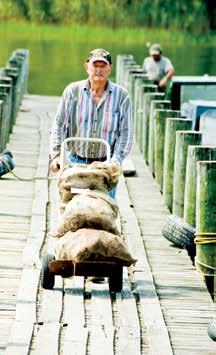
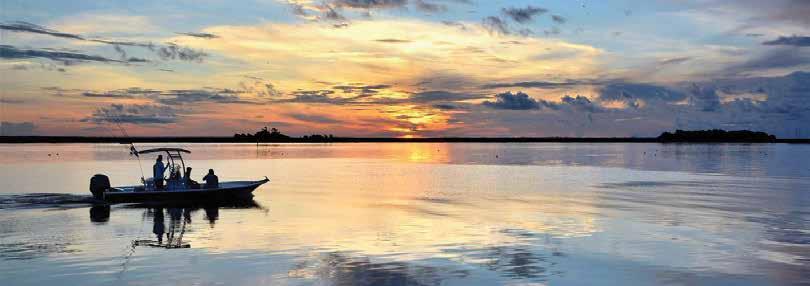
FloridasForgottenCoast.com
11
Palmer Philyaw
St. George Island
St. George Island is the premier beach destination for those seeking natural beauty without the big crowds.

See Page 14
Places to Stay
See Page 18
Places to Eat
See Starting Page 30
Things To Do
12 About The Area
@christieannphotography
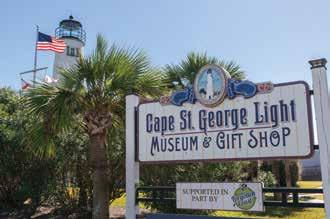

St. George Island is a 22- mile barrier island that hosts some of Florida’s most beautiful and serene beaches. No high rises anywhere, just an unspoiled island with a laid-back attitude. The uncrowded beaches are perfect for family-friendly activities such as swimming and shelling and just plain relaxing. The clear gulf waters invite swimming and fishing, and the pristine bay marshes feature extraordinary wildlife and sunset viewing. Rent a kayak, boat, bicycle or scooter. Accommodations, which range from quaint beach cottages to luxurious beach homes, can be reserved with any of the island’s vacation rental companies or stay at the hotel or inn.
St. George Island is one of the few beaches that allows pets, and many of the vacation homes are pet-friendly. There are several pet-friendly accommodations and pet-friendly restaurants that cater to you and your best friend. The selection of accommodations on St. George Island is impressive. Camp at the St. George Island State Park, rent a hotel room, or reserve a villa or spacious home on the bay, beach, or in-between.
We fish here … a lot. You can cast a rod from the shore, skim the flats, or head out to open water with a charter boat captain. The island features several bait and tackle shops. There are two public

boat ramps on the island – one at the foot of the bridge as you arrive and another in the State Park at the east end. There are several businesses on the island that rent kayaks, paddleboards or even boats. You can charter a trip with experienced fishing and tour guides.
There are so many family and pet-friendly things to do on St. George Island. Rent a bike or bring your own to enjoy miles of bike paths. There is a sixmile paved path that parallels Gulf Beach Drive, from just outside St. George Plantation to the entrance of St. George Island State Park on the island's eastern end. Enter the state park and you'll have the opportunity to pick up hiking trails for exploring dunes, forest, and marshes. Rent a boat or charter a trip to explore the bay and nearby islands. Go fish, rent a kayak or paddleboard, take a hike, or go bird-watching or stargazing. Walk the beach at dawn in early summer, and you may see nesting sea turtles. Stop at the visitor center and take a picture of the historic lighthouse, the Cape St. George Light.
St. George Island is home to the annual Chili Charity Cookoff, Shrimp Fest and BrewFest event each Spring. Fall brings annual Halloween festivities and the beloved Lighting of the Palms around Christmas.
point of interest
Beginning early summer, several species of sea turtles including loggerhead, green and leatherback sea turtles arrive to the beaches of Franklin County to dig their nests and lay eggs along the dune line. Sea turtles generally nest at night to avoid the sun's heat. After about two months, the hatchlings emerge at night and crawl to the gulf guided by light of the seaward horizon. Sometimes hatchlings are fooled by artificial light from beach homes.
During nesting season, sea turtle volunteers canvas the beaches daily for turtle tracks, mark and protect nests with screen and monitor the incubation process. Visitors can help by turning off outdoor lights and by removing belongings from the beach each evening. Beach chairs, coolers, canopies and floats often become barriers to nesting turtles and to the hatchlings.
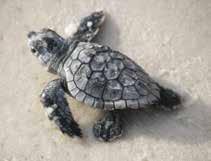
13 FloridasForgottenCoast.com
Maggie Fuller
VISIT FLORIDA
Lou Kellenberger
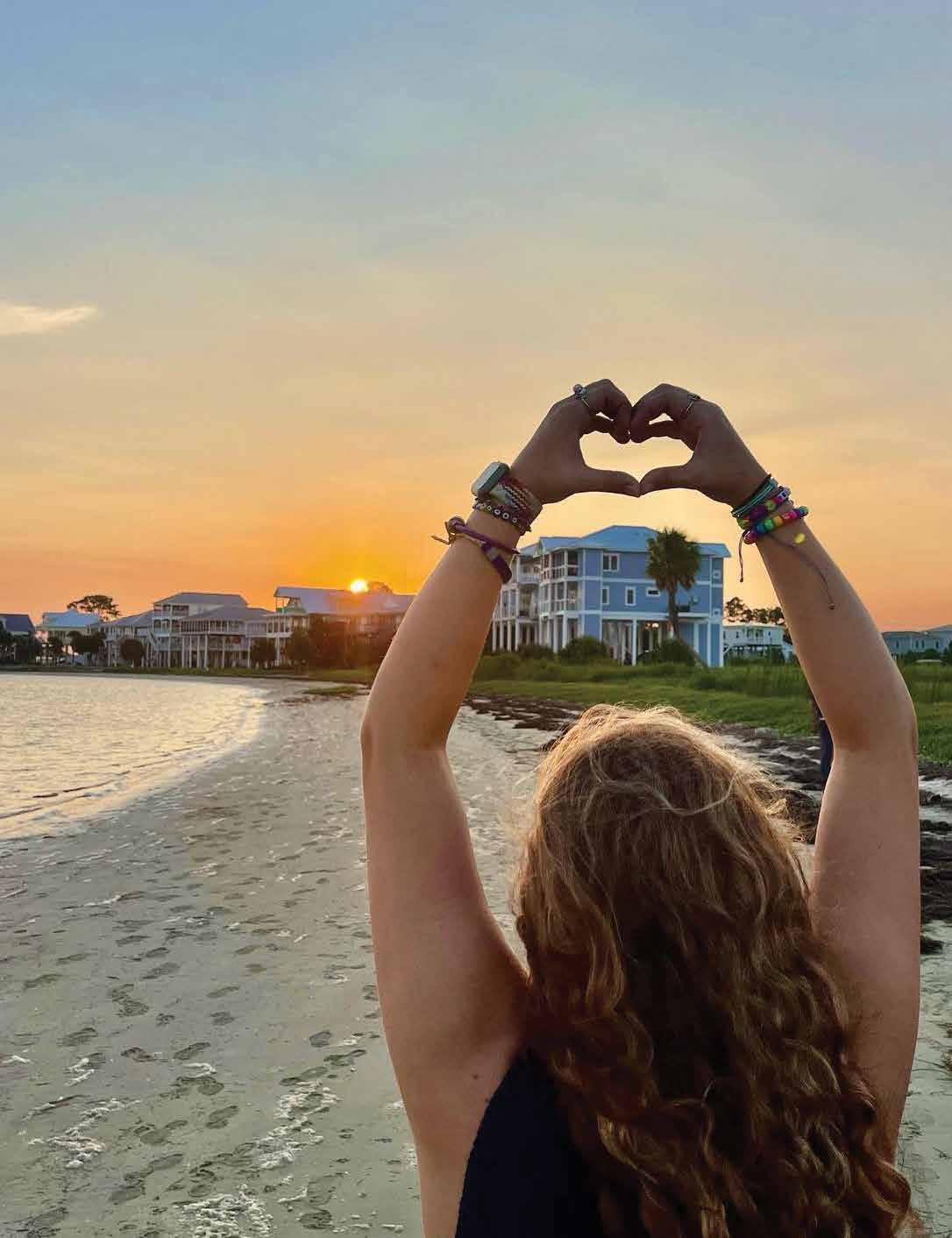
Places to Stay
Stay
Places To
14 @saltwatertaffycottage


Florida’s Forgotten Coast features a variety of lodging options. From quaint bed and breakfast accommodations to luxury beachfront or waterfront suites and historic inns, there is something for every budget here.
Bed & Breakfasts
Blue Moon Inn of Apalachicola
19 Leslie Street, Apalachicola 850-228-4015
BlueMoonRSVP@gmail.com
Coombs Inn & Suites
80 6th Street, Apalachicola 888-244-8320
www.coombshouseinn.com
info@coombshouseinn.com
House of Tartts Guest House
50 Avenue F, Apalachicola 850-653-4687
www.houseoftartts.com
info@houseoftartts.com
The Old Carrabelle Hotel
201 Tallahassee Street, Carrabelle 850-528-3983
www.oldcarrabellehotel.com
info@oldcarrabellehotel.com
Hotels & Inns
Apalachicola River Inn
123 Water Street, Apalachicola 850-653-8139
www.apalachicolariverinn.com
Apalachicola Riverwood Suites
29 Avenue F, Apalachicola 850- 653-3848
www.apalachicolariverwoodsuites.com
monica@riverwoodsuites.com
Bay City Lodge
1000 Bay City Road, Apalachicola 850-653-9294
www.baycitylodge.com
Best Western Apalach Inn
249 US Hwy 98 West, Apalachicola 800-528-1234
www.bwapalachinn.com
info@bwapalachinn.com
Bowery Inn
161 Commerce Street, Apalachicola 850-296-2475
www.personplaces.com/bowery-inn/ Buccaneer Inn
160 West Gorrie Drive, Eastpoint 800-847-2091
www.buccinn.com
info@buccinn.com
Coombs Inn & Suites
80 6th Street, Apalachicola 888-244-8320
www.coombshouseinn.com
info@coombshouseinn.com
Franklin Inn
1589 Highway 98 West, Carrabelle 850-697-4000
Gibson Inn
51 Avenue C, Apalachicola 850-653-2191
www.gibsoninn.com
Island Suites
116 West Gorrie Drive, St. George Island 850-933-1664
www.island-suites.com
island.ste@gmail.com
@bebenntravels
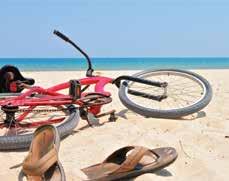
The Franklin County Tourist Development Council sponsors several getaways throughout the year that could put you in an all expense-paid fantasy accommodations.
Enjoy an eco-adventure weekend, a cultural getaway, a fishing excursion or a pet-friendly beachfront vacation.
In addition to activities and meals, you'll stay in an area beachfront house, historic inn or boutique hotel. This is a perfect way to experience many of the county's amenities.
Check out FloridasForgottenCoast.com and sign up to receive activities and events information and be among the first to register online for getaways as they are announced.
Continued on page 16
Floridasforgottencoast.com
15
Getaway!
Win A
@bsm0110
Places To Stay
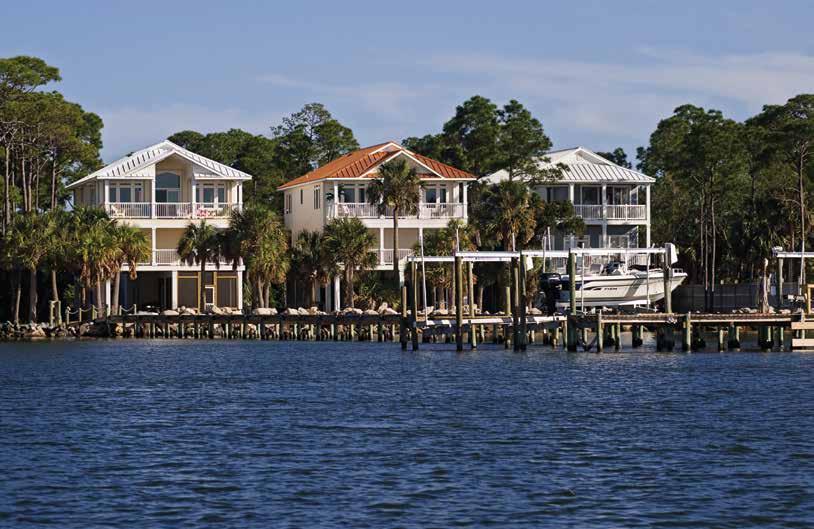
Places To Stay, from page 15
Sportsman’s Lodge
99 North Bayshore Drive, Eastpoint 850-670-8423
www.sportsmanslodgeonthebay.com
SportsmansLodgeEastpoint@gmail.com
St. George Inn
135 Franklin Blvd, St. George Island 850-927-2903
www.stgeorgeinn.com
info@stgeorgeinn.com
The Consulate 76 Water Street, Apalachicola 877-239-1159
www.consulatesuites.com
The Moorings
1000 North West Avenue A, Carrabelle 866-821-2248
www.mooringsofcarrabelle.com
contact@mooringsofcarrabelle.com
The Old Carrabelle Hotel 201 Tallahassee Street, Carrabelle 850-528-3983
www.oldcarrabellehotel.com
info@oldcarrabellehotel.com
Water Street Hotel & Marina 329 Water Street, Apalachicola 888-211-9239
www.waterstreethotel.com
VACATION RENTALS
49 Palmetto – The Flat 49 Avenue G, Apalachicola 850-323-1600
www.49palmetto.com
Anna-Maria@49Palmetto.com
Blue Moon Inn of Apalachicola 19 Avenue C, Apalachicola 404-550-5110
BlueMoonRSVP@gmail.com
Coastline RV Resort
957 Highway 98, Eastpoint 850-799-1016
stay@coastlinervresort.com
Carrabelle Beach RVC 1843 Highway 98, Carrabelle 850-697-2638
rvcoutdoors.com/carrabelle-beach
Collins Vacation Rentals
60 East Gulf Beach Drive, Eastpoint 877-882-4315
www.collinsvacationrentals.com
Fickling & Company
112 Franklin Bouevard, Eastpoint 877-927-2218
www.ficklingvacationrentals.com
vacations@fickling.com
Harbor Point Vacation Rentals
127 Harbor Circle, Alligator Point 877-774-8671
www.harborpointrentals.com
info@harborpointrentals.com
Ochlockonee Bay Realty
146 Coastal Highway 98, Panacea 850-984-0001
www.alligatorpointbeachrentals.com obr@obrealty.com
Resort Vacation Properties
61 West Gulf Beach Drive, Eastpoint 866-976-6126
www.resortvacationproperties.com/tdc Rexford Suite
21 Avenue E, Apalachicola 850-323-0811
the.rexford.suite@gmail.com
Robinson Vacation Rentals
44 Avenue E, Apalachicola 850-653-7196
www.robinsonrealestatecompany.com
robinson@robinsonrealestatecompany.com
Sandy Beach Properties
314 St. James Avenue, Carrabelle 850-697-5300
www.mysandybeach.com
info@mysandybeach.com
16
Pat Canova
Sandy Toes Florida
6 Tarpon Street, Alligator Point 850-888-3295
https://sandytoesflorida.com/ sydney@sandytoesflorida.com
Seaside Retreat
850-519-2828
St. James Bay Villas & Condos
160 Laughing Gull Lane, Carrabelle 850-697-9606
www.stjamesbay.com
info@stjamesbay.com
Still Waters
965 West Gorrie Drive, Eastpoint 850-510-6053
Suncoast Vacation Rentals
224 Franklin Boulevard, Eastpoint 850-927-2282
www.uncommonflorida.com
samuelgilbert@yahoo.com
Sunset Isle RV & Yacht
260 Timber Island Road, Carrabelle 850-556-0051
www.sunsetislerv.com
Villa H-5
240 West Gorrie Drive, Eastpoint 229-883-0556
cparks6020@gmail.com
Carrabelle Beach RVC
1843 Highway 98, Carrabelle 850-697-2638
www.rvcoutdoors.com/carrabelle-beach
Coastline RV Resort
957 Highway 98, Eastpoint 850-799-1016
www.coastlinervresort.com
stay@coastlinervresort.com
Ho-Hum RV Park
2132 Highway 98 East, Carrabelle 850-697-3926
www.hohumrvpark.com
Sportsman’s Lodge
99 North Bayshore Drive, Eastpoint 850-670-8423
sportsmanslodgeonthebay.com
St. George Island State Park 1900 East Gulf Beach Drive, Eastpoint 850-927-2111
www.floridastateparks.org/stgeorgeisland/ FSP.Feedback@dep.state.fl.us
Floridasforgottencoast.com
Lodging Providers
Scan the QR code below to link to the many vacation rental homes, hotels and other lodging opportunities along the Forgotten Coast.

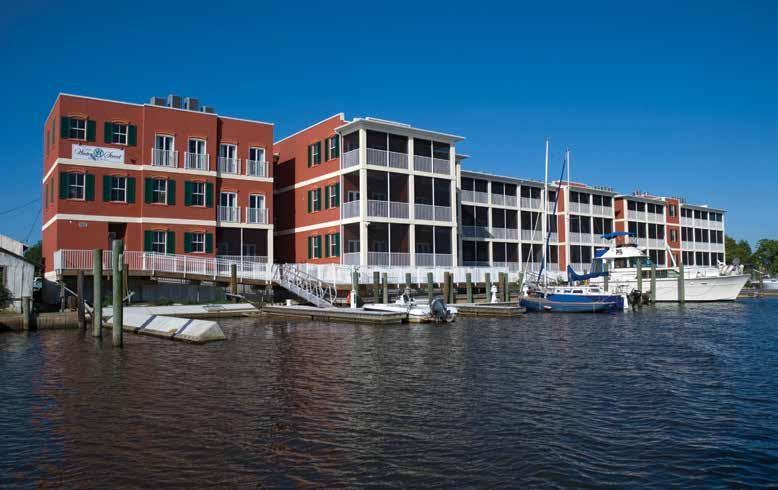
17
Pat Canova
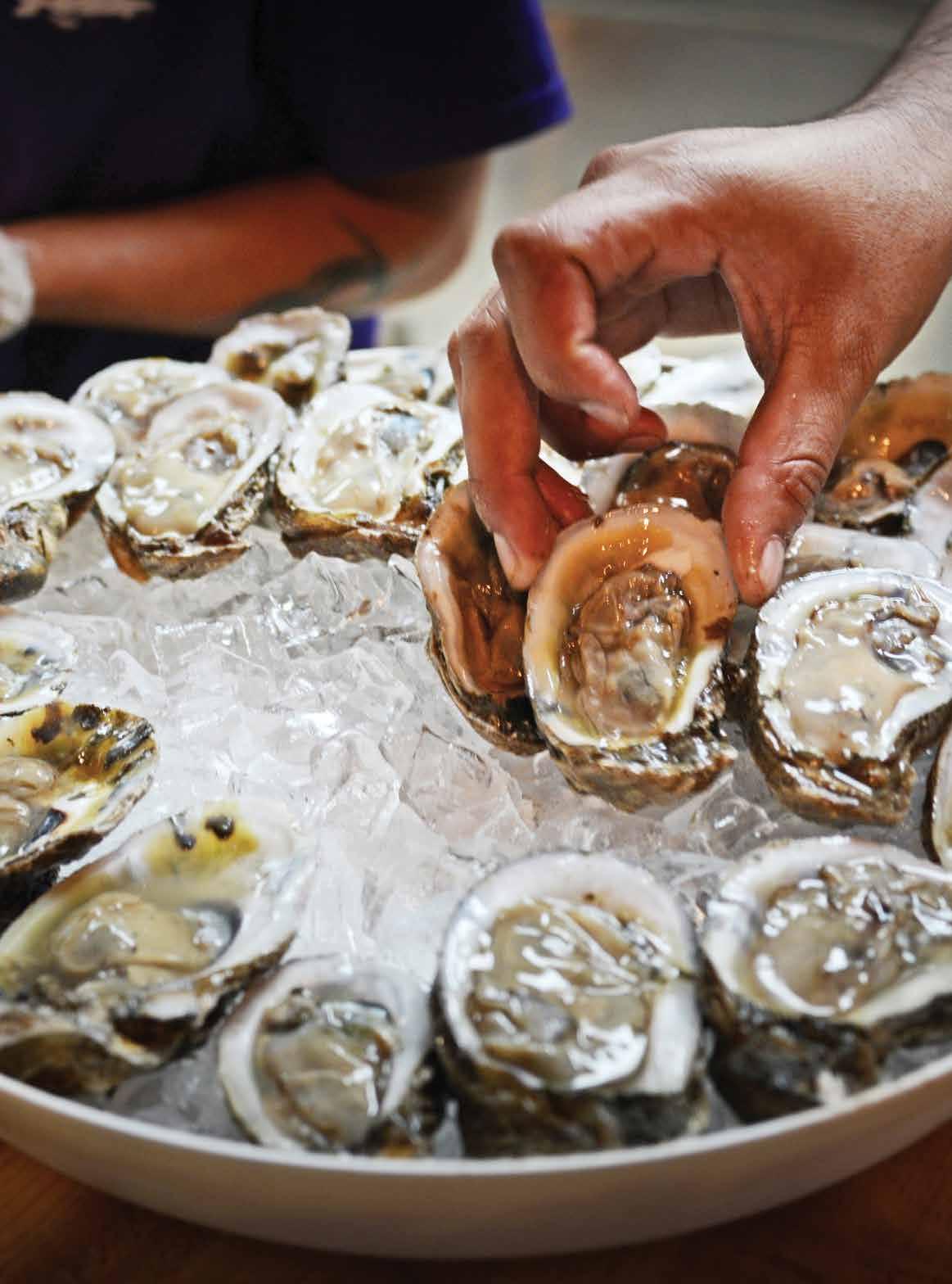
Restaurants & Nightlife
18
Dining & Entertainment VISIT FLORIDA
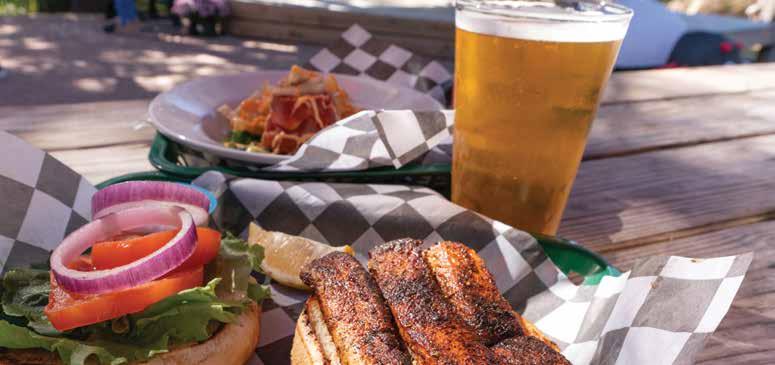
Franklin County's restaurants offer everything from casual beachfront restaurants and river-front oyster bars to upscale cafes featuring continental cuisine, coastal specialties, sixcourse chef’s seasonal wine dinners.
Local fare served in more than 30 area restaurants features wholesome and nutritious seafood from the pristine Apalachicola Bay, Alligator Harbor and the Gulf of Mexico, including oysters, clams, shrimp and blue crabs. In addition to serving seafood fresh from local markets, many Franklin county chefs also patronize local and regional dairies, beekeepers, produce and livestock farmers to provide the freshest in cheeses, honey, coffee, organic produce and meats for their patrons.
Restaurants
Scan the QR code below to link to the many restaurants along the Forgotten Coast.

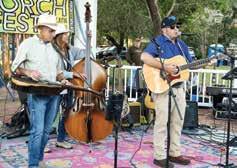
Franklin County features a wide variety of nightlifeeach is unique, organic and the perfect way to spend an
evening.
Local Breweries
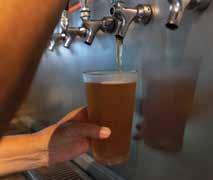
Franklin County boasts several breweries stretching from Apalachicola to Carrabelle.
The Watercraft Brewing Company and Oyster City Brewing Company are located in the heart of Apalachicola’s historic downtown district just steps from the riverfront. Down the street, the Coastal Soul Brewing Company is located in the High Five Dive Bar and the Buoy Brewing Company is at Scipio Creek Marina. The Eastpoint Beer Company is located on the waterfront overlooking St. George Sound in Eastpoint.
Breweries
Scan the QR code below to link to local breweries .

19
VISIT FLORIDA
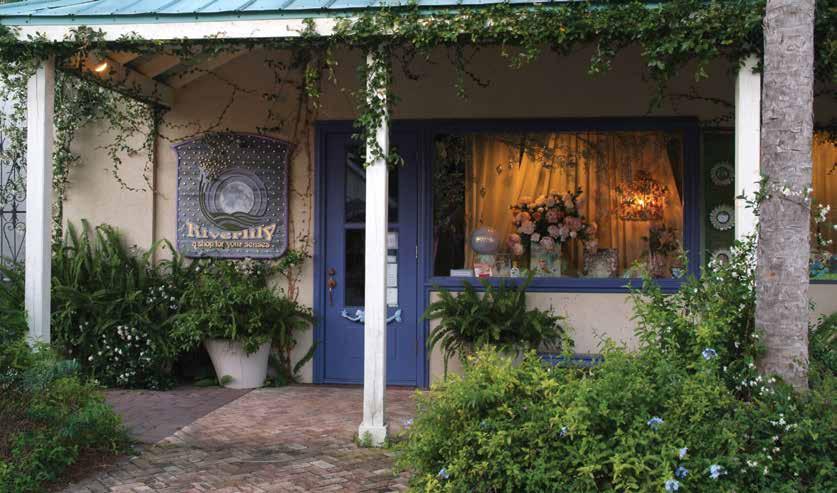
Shopping
The small coastal towns along Florida's Forgotten Coast boast some unique art galleries, eclectic boutiques and charming shops brimming with handmade, upscale, vintage treasures and unusual gifts not found anywhere else.
There’s more to Florida’s Forgotten Coast than pristine beaches, fresh local seafood and historic landmarks. The small coastal towns of Apalachicola and Carrabelle also boast some unique art galleries, eclectic boutiques and charming shops brimming with handmade, upscale, vintage treasures and unusual gifts not found anywhere else.
Apalachicola’s historic downtown features more than 20 fine art galleries, home interior shops, antique shops, clothing and gift boutiques. In Carrabelle, browse through this port town’s many unique gift and antiques shops offering collectibles, local art and unusual gifts. St. George Island features a full compliment of beach supply and sundries shops, bicycle, kayak and beach gear rental shops, beach wear boutiques, souvenir and gift shops, galleries, ice cream and specialty food stores. Eastpoint is your stop for recreational fishing supplies, bait and tackle and all things marine-related.

Shops
Scan the QR code below to link to the many shops and boutiques along the Forgotten Coast.


Wedding & Special Event Planning
Franklin County is the perfect place to say “I Do.” Whether it’s a picturesque beach wedding or a traditional church wedding in one of Apalachicola’s historic chapels, there are many wedding venues from which to choose. Full-service service provider can supply everything needed from flowers, catering, photography, personal services, music and wedding rentals.
Wedding Resources
Scan the QR code for wedding resources.

20 Shopping
@sparklepopfizzclink
Pat Canova
Art & Culture
Franklin County is awash in art. Whether it’s theatre, music or fine art you’re sure to find something to suit your interests.
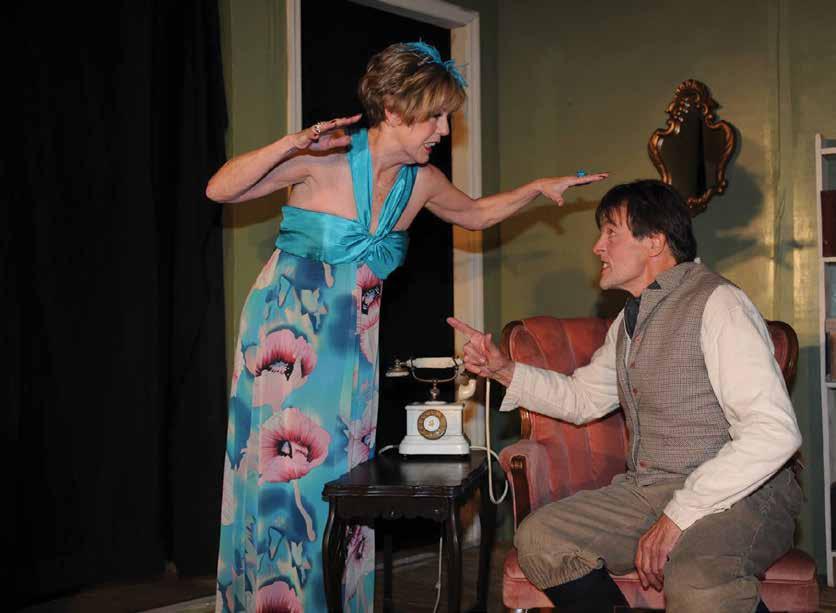
Drawn to the area because of its natural beauty, many artists consider Florida’s Forgotten Coast a mecca and inspiration for the creation and displaying of their art. Art galleries are tucked into the nooks and crannies within several of Apalachicola’s historic downtown warehouses. You’ll find fine art here created by nationally recognized artists, creative folk art, photography, unique sculpture and glass art. Theater buffs will appreciate the historic Dixie Theatre, a restored historic theater in the city’s downtown district. Community theater thrives here also in the form of the Panhandle Players.
Apalachicola's Center for History, Culture and Art, located in an historic brick warehouse overlooking the Apalachicola River, maintains an ongoing exhibit of noted regional artists and hosts classes throughout the year in a variety of disciplines.
In Carrabelle, there are a growing number of galleries tucked near the City’s riverfront district. The Rio Carrabelle Gallery also hosts seasonal pop and jazz concerts as part of an annual concert series funded through a local arts organization. Whatever your tastes, you’re sure to find some art treasure to take home!
Art Galleries
Scan the QR code below to link to the many art galleries and museums along the Forgotten Coast.

Theater and Music
Venues
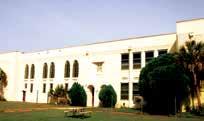
Chapman Auditorium
(Home of the Panhandle Players)
155 Avenue E
Apalachicola
850- 629-8680
panhandle-players.com
Rio Carrabelle
102 St. James Ave., Carrabelle
615-337-1290
www.riocarrabelle.com
riocarrabelle@gmail.com
FloridasForgottenCoast.com 21
Royce Rolstad
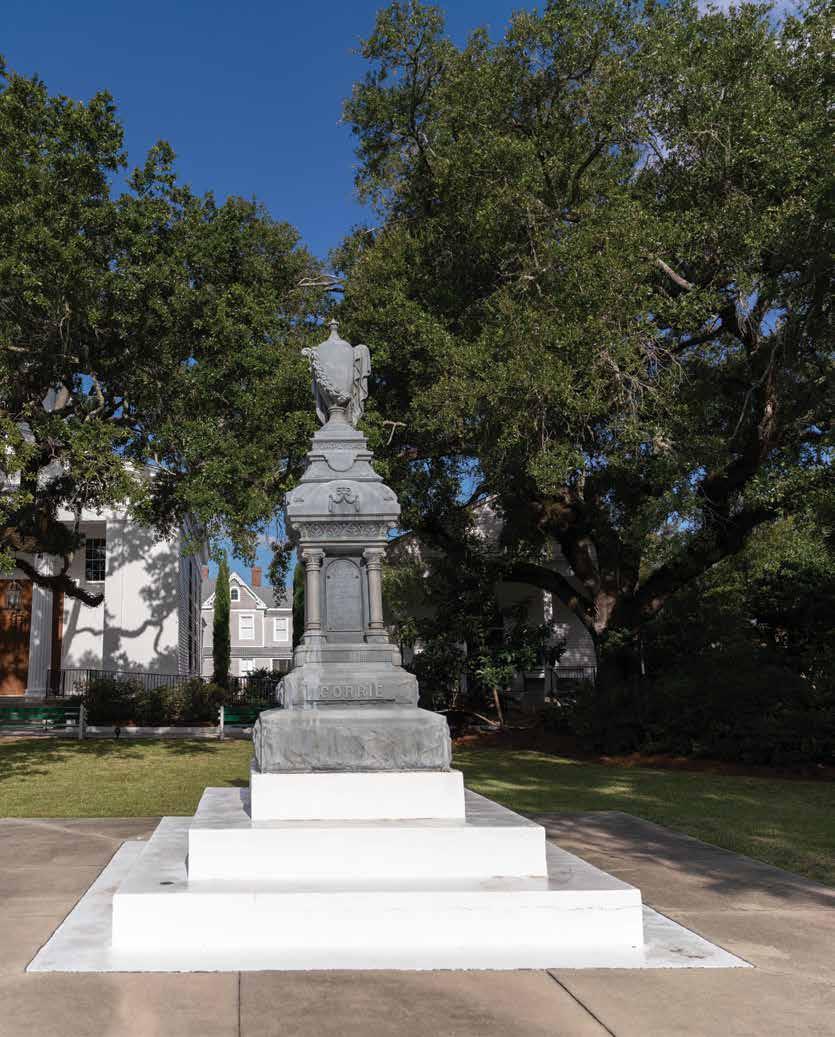
If you love old Florida history, you’ll love us! History
22 History and Heritage
VISIT FLORIDA
FloridasForgottenCoast.com
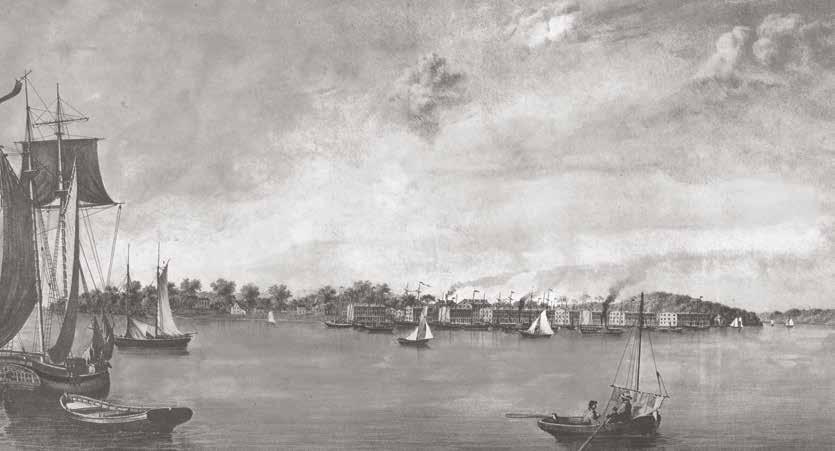
APALACHICOLA
Apalachicola enjoys a history rich in maritime culture and natural resources.
Apalachicola is an Indian word for “land beyond” or “those people residing on the other side” or “friendly people over there.” There were once more than 40,000 Indians in this region. The first non-natives were the Franciscan friars who arrived from Spain in the 1700s. Early trade between the Spanish and Creek Indians was in produce and fur.
Apalachicola was established in 1831 and grew quickly as a cotton shipping port town. By the mid 1800s, Apalachicola’s waterfront was lined with brick warehouses and broad streets to handle the loading and unloading of cotton. At one point, Apalachicola was heralded as the third largest port on the gulf. Steamboats laden with cotton came down the river and were unloaded on the docks. From there, the cotton was reloaded onto shallow-draft schooners that shuttled the cargo to ships waiting offshore.
The invention of refrigeration in 1851 by Dr. John Gorrie proved revolutionary not only to Apalachicola but to the entire nation. Gorrie invented
refrigeration and a form of air conditioning while attempting to treat yellow fever victims.
By the eve of the Civil War in 1861, Apalachicola was the sixth largest town in Florida with 1,906 residents. Around that same time, Apalachicola had a racetrack, the Mansion House, which offered balls, socials and gambling, an opera house and a newspaper.
By the late 1800s, railroads had expanded throughout the U.S. carrying cargo farther and faster. As a result, the steamboats slowly disappeared from the Apalachicola River and the timber indus try boomed, fueled by seemingly endless miles of rich forestland. Lumber mills were established and lumber magnates built many of the historic homes that line the town’s streets today. Late in the 19th century and on into the 20th, both Apala chicola and Carrabelle produced large quantities of lumber and turpentine.
CARRABELLE
The history of Carrabelle is a story of Indians, shipping, bootlegging, logging and even war.
Continued on page 24
point of interest
HISTORIC DISTRICT TOUR
You can take a self-guided tour of Apalachicola’s historic district and learn about more than 35 private homes and public sites.
APALACHICOLA MUSEUM
TRAIL This self guided tour features museums, parks and historic sites. Map available at the Apalachicola Center for History, Culture and Art, the Apalachicola Visitor Center or download at HistoricApalachicola.com.
CARRABELLE SNAPSHOT TOUR
This self guided tour features historic
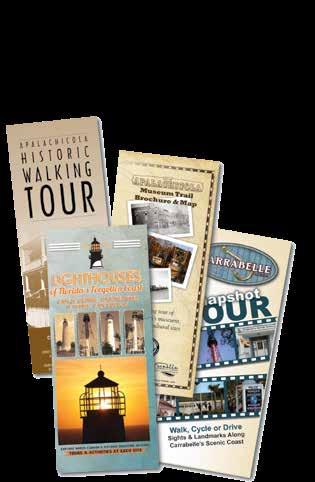
23

History, from page 23
Rio Carrabella, or “beautiful river” was the early name of Carrabelle. Early settlers in the area, both Indians and early Europeans, hunted game for food and furs, which were then shipped out of St. Marks.
Carrabelle became a city in 1893. Carrabelle’s boom time, however, actually happened prior to that. The Carrabelle area flourished after the Civil War when lumber and naval stores were the most important commodities. In 1875 the first lumber mill was established. Schooners would come through the pass and drop anchor behind Dog Island in Ballast Cove, so named because the ships would drop their ballast before sailing into Carrabelle to pick up their cargo.
The town’s proximity to the coast made it particularly susceptible to hurricanes. A series of hurricanes hit the area during the late 1800s. One that struck in 1900 destroyed much of the community. Following the hurricane, the town was rebuilt and the downtown relocated more inland to its present location.
In 1895 a lighthouse was erected just west of Carrabelle about a quarter of a mile from St. George Sound. It was known as the Crooked River Lighthouse. The historic lighthouse still stands today. The Crooked River Lighthouse Park and Keeper’s House Museum features an authentic period room from the first keeper, exhibits, a gift shop and playground.
By 1941 Carrabelle had become an important oil shipping port. Oil was shipped to Carrabelle, sent by pipeline to Jacksonville where it was loaded on ships for delivery to Europe.
ST. GEORGE ISLAND
The history of St. George Island is colored with pirates, Indians and shipwrecks. The Creek Indians first inhabited the island as early as the 1600s. The arrival of the Europeans to the island was followed by intensive struggles for control of the area. Pirate Captain William Augustus Bowles led the Creek Indians in their defense against the Spanish and French in the late 1700s. Legend has it that before Bowles died he buried a treasure somewhere on the island.
After the Forbes Purchase in 1803, commercial sailing traffic increased and a lighthouse was built on the west end of the island, which is now Little St. George Island. Following years of coastal erosion the Cape St. George Light toppled into the gulf in 2005. It has been rebuilt by lighthouse enthusiasts in its present location in the center of the St. George Island business district.
DOG ISLAND
Dog Island’s history is rich and colorful. The island and its two neighbors, St. George Island and St. Vincent Island, were discovered by the French in 1536 and initially named the Dog Islands, presumably either because wild dogs were
found on them, the islands resemble a crouched dog, or the early ships put their common sailors - known as dogs - on the islands before docking on the mainland so they could not jump ship. Later, the two neighbors were renamed: St. Vincent, which is a Federal wildlife refuge, and St. George Island.
During the 17th century and 18th century Dog Island became a haven of piracy and smuggling.
In 1838, a lighthouse was built on the western tip of the island. The first lighthouse, a 50-foot brick tower, was completed in 1839. A storm in 1842 destroyed the keeper's house and badly damaged the lighthouse tower. A 40-foot replacement wooden tower was completed in 1843 to replace the brick tower. This second tower was destroyed by a hurricane in 1851. A third 40-foot brick tower was built in 1851.
Dog Island was used as a staging base by the Union army during The Civil War. During that time, Confederate forces burned the stairs in the lighthouse tower and damaged the lens to prevent the tower from being used as a lighthouse or a watchtower. The light was repaired and put back into service after the war. In 1872 beach erosion undermined the tower and caused it to fall. The lantern was salvaged and was moved to the top of the keeper's dwelling. On September 18, 1873 another hurricane destroyed the third tower and the keeper's dwelling.
History and Heritage 24
VISIT FLORIDA

The Dog Island Light was never replaced. Instead, the Crooked River Light (built near Carrabelle on the mainland in 1895) serves as a leading light for the same channel that was formerly marked by the Dog Island Light.
During World War II Dog Island was part of Camp Gordon Johnston. Four separate camps comprised the complex: three for regimental combat teams, and the fourth for the headquarters and support facilities. Dog Island was used for amphibious landings and airdrops.
After World War II, Jeff Lewis, a Florida businessman, saw its potential as a vacation area and paid $12,000 for the island and then sold a portion of it to the Nature conservancy which still owns a major portion of the island.
An archaeological research project, the Dog Island Shipwreck Survey, was initiated in 1999 by Florida State University to systematically search the waters off Dog Island, using acoustic and electromagnetic devices, to discover historic shipwrecks. Many of these shipwreck relics have since been turned into diving and fishing destinations.
LANARK VILLAGE
Lanark Village, located on the gulf about four miles east of Carrabelle, began as part of a promotion plan carried out by the Georgia, Florida and Alabama Railroad. It became a fashionable resort for people in nearby counties. The Lanark Springs Resort included a two-story hotel. A swimming area was fenced near shore where tourists could swim in a large freshwater spring emerging into the salt water of the bay.
During WWII Camp Gordon Johnston was built at Lanark Beach for use as an amphibious training facility. More than 25,000 trainees passed through the camp with about 10,000 housed there at a time. For many it was the last stopover before going to the Pacific or European theaters. Many of the officers’ quarters still exist today in the Lanark Village retirement community.
EASTPOINT
Eastpoint was founded by a communal religious group. Prominent among the early settlers was the Brown family. The Browns, along with five other families, traveled down the Chattahoochee River
from Georgia. The families established a group called the Co-Workers’ Fraternity which farmed the land, harvested seafood, worked the lumber industry and shared the profits. Rebecca Wood Brown served as Eastpoint postmistress from 1898 to 1938. Eastpoint’s first post office was located in the Brown home. Descendents of the Brown family still live in Eastpoint.
ST. VINCENT ISLAND
St. Vincent Island was named by Franciscan friars who, around 1625, were moving westward through the Apalachee territory establishing missions. St. Vincent was part of the 1803 Forbes Purchase. In 1907 the land was sold to Dr. Valentine Mott Pierce, a patent medicine millionaire, who kept the island as a summer resort. Exotic animals were imported to the island and, for awhile, the island was run as a game preserve. Of all the exotics imported to the island only the Sambar deer remain today. In 1968 St. Vincent was purchased by the Federal Government for use as the St. Vincent Island National Wildlife Refuge. The Refuge Visitor Center is located in Apalachicola.
ALLIGATOR POINT
Alligator Point and Bald Point were inhabited 3,000 years before the Spanish arrived. In the mid-1800s and early 1900s, fishermen established seineyards at Bald Point. Evidence of the early turpentine industry is evidenced by pine trees that feature “cat face” scars. Bald Point was the site of military maneuvers during the WWII era.
Lighthouses and beacons such as this one from St. George Sound helped mariners navigate. FloridasForgottenCoast.com 25
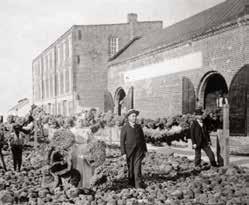
Apalachicola enjoyed a thriving sponge industry in the mid 1800s. For a time Apalachicola was the third largest sponge producing area in the state. By 1895 Apalachicola had two sponge warehouses; one of the warehouses still exists today in the downtown district.
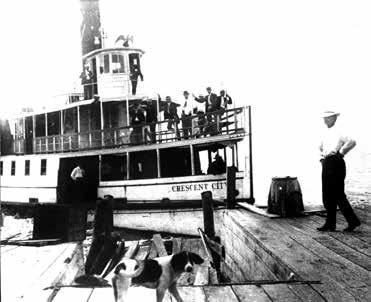
The steamboat Crescent City was once the only form of transportation between Apalachicola and Eastpoint.
Museums & Historic Sites
APALACHICOLA
Apalachicola Historic District
Apalachicola
www.cityofapalachicola.com
Apalachicola Maritime Museum
103 Water Street
850-653-2500
ammfl.org
Chestnut Street Cemetery Avenue E
One of the most significant cemeteries on the Florida Gulf Coast.
Chapman House Museum
82 Sixth Street
Fort Gadsden Historic Site
Apalachicola National Forest
850-643-2282
Franklin County Maritime Heritage Museum
441 U.S. Hwy 98 West
Holy Family Cultural Center
203 Dr. Frederick Humphries St.
John Gorrie Museum State Park
46 Sixth Street
850-653- 9347
floridastateparks.org
Orman House Museum
177 Fifth Street
850-653-1209
floridastateparks.org
During WWII, Camp Gordon Johnston was built at Lanark Beach for use as an amphibious training camp.
Raney House Museum
128 Market Street
850-653-1700
apalachicolahistoricalsociety.org
Veterans Memorial Plaza
Featuring the Three Servicemen Statue South, Detail
230 Market Street
850-653-1318
threeservicemenstatuesouth.org
CARRABELLE
Camp Gordon Johnston WWII Museum
1873 Highway 98, Carrabelle Beach
850-697-8575
campgordonjohnston.com
Crooked River Lighthouse
Park and Keeper’s House Museum
1975 West Highway 98
850-697-2732
crookedriverlighthouse.org
Carrabelle History Museum
106 Avenue B South East
850-697-2141
carrabellehistorymuseum.org
ST. GEORGE ISLAND
Cape St. George Lighthouse Park
2 East Gulf Beach Drive
850-927-7745
stgeorgelight.org


26
History and Heritage

Lighthouses
The Cape St. George Lighthouse and the Crooked River Lighthouse reflect the area's maritime history and commitment to preserving a unique coastal heritage.
Franklin County boasts two restored lighthouses. The first is located on St. George Island. The second is located at Carrabelle Beach. Each tells a tale of coastal living in Franklin County more than 100 years ago and each is worth visiting.
CAPE ST. GEORGE LIGHT
The Cape St. George Light, which stands at the center of St. George Island, is the fourth reconstruction of the historic lighthouse that was originally built on what is now Little St. George Island. The first lighthouse was erected in 1833 near West Pass but was difficult for maritime traffic approaching from the east to see.
After suffering storm damage it was ultimately dismantled and its bricks were used in the construction of a new tower, completed in 1848 at Cape St. George. The second lighthouse fell during a hurricane in 1851. The third lighthouse was completed in 1852, again using materials from its predecessor, but positioned further inland from the water’s edge. For 153 years the Cape St. George Light
valiantly served mariners well, but beach erosion ultimately caused its collapse on October 21, 2005. In a dramatic team effort involving private contractors, local volunteers, and government funding, the pieces of the Light were salvaged and moved to a storage site on the mainland. The St. George Lighthouse Association acquired the 1852 plans from the National Archives and led the effort to reconstruct the lighthouse on St. George Island. Volunteers cleaned old mortar off the salvaged bricks, and more than 22,000
original bricks were used in the rebuilding effort. Original granite door jambs and window lintels were re-installed in the reconstructed lighthouse. The iron lantern room, twisted beyond hope in the fall, was reforged using the original pieces as patterns. With extensive community support and public and private funding, the Cape St. George Light was successfully rebuilt and opened to the public on December 1, 2008. A replica of the
Continued on page 28
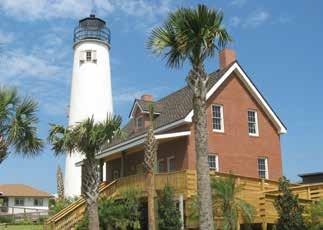
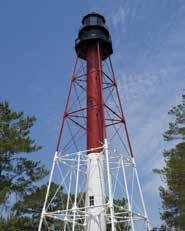
FloridasForgottenCoast.com 27
Rusty Amos
point of interest

ST. GEORGE LIGHTHOUSE FULL MOON CLIMBS
The St. George Lighthouse host special climbs each month on full moon evenings. Visitors are able to climb the 92 stairs of the Cape St. George Light to see breathtaking views of the Gulf of Mexico, Apalachicola Bay, and St. George Sound. stgeorgelight. org
CROOKED RIVER ANNUAL LANTERN FEST
This unique annual festival is held the second Saturday of October at Carrablle Beach's Crooked River Lighthouse. The evening event features colorful displays of handmade lanterns, children's activities, storytelling, music, dance and food. crookedriverlighthouse.org
Lighthouse, from page 27
original Lighthouse Keeper’s House, built next to the lighthouse, features a museum and gift shop. Museum exhibits include the lighthouse history and artifacts. An audio-visual “interactive archive” provides visitors access to videos, photographs and documents relating to the lighthouse.
CROOKED RIVER LIGHTHOUSE
For nearly 100 years the Crooked River Lighthouse stood as a guiding light for ships, and fishermen navigating the treacherous pass between Dog and St. George Islands. Today the lighthouse and keeper's house museum stand on the mainland where the light was originally built in 1895, replacing the three shortlived beacons destroyed by hurricanes on Dog Island. The 103 foot iron and steel structure was decommissioned by the Coast Guard in 1995 and is listed on the National Register of Historic Places. The Carrabelle Lighthouse Association and the City of Carrabelle obtained owner-
ship of the landmark just weeks before being auctioned and created a public park surrounding it. Public and private financial support enabled the restoration of the structure to be completed in 2007. Nestled in a north Florida forest habitat the lighthouse beams nightly, with its acrylic replica of its original 4th order Fresnel lens. The park picnic area features a replica of the Crooked River Lighthouse Keeper’s House which was patterned after the original 1895 plans. The Keeper’s House serves as a museum, gift shop and headquarters for the CLA. Exhibits include an historical setting of the early 1900s, examples of beacons and the methods of constructing a skeletal tower lighthouse. Everyday life objects in the Keeper’s Room include original clocks, a barometer, a glass fire grenade, pages from the keeper’s watch book, currency and much more. Visitors can look through replica Sears catalogs for a perspective on cost of living during the past century. Group educational tours are welcomed and new science-based programs are being developed.
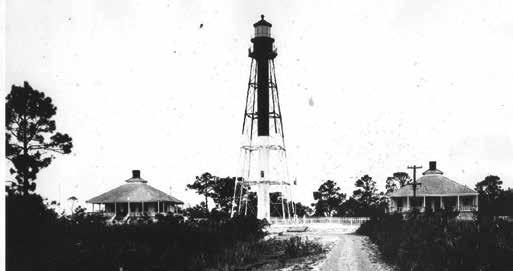

History and Heritage 28
Visit Florida
 Forrest Wesson
Forrest Wesson
A Seafood Heritage
Apalachicola Bay is the lifeblood of a generations-old way of life along Florida's Forgotten Coast. The seafood culture here is unique and fragile.
Apalachicola Bay is one of the most productive estuarine systems in the world featuring the perfect balance of environmental conditions necessary for feeding, breeding and nurturing an abundant variety of seafood, including the world famous Apalachicola Bay oysters.
The combination of environmental conditions, taste and productivity gives the area the title of Oyster Capital USA. The Apalachicola Bay oyster industry is based on the highly preferred “American” or “Eastern” oyster, also known by its scientific name Crassostrea Virginica. This species is the principle oyster harvested commercially along the Gulf of Mexico.
Oysters often get top billing but Apalachicola Bay also produces an equally important shrimping industry. There are three major types of shrimp harvested from the waters in and around Apalachicola Bay: white, brown and pink
shrimp. Apalachicola Bay shrimpers average more than a million pounds per year, nearly 20% of the state’s shrimp supply. An active blue crab industry also exists in Apalachicola Bay, producing nearly 10 percent of the hard-shell blue crabs landed in Florida. Commercial fish species harvested in the bay include mullet, flounder and pompano.



FloridasForgottenCoast.com 29
Visit
Seafood Retail &
Seafood Markets Scan the QR code below to link to the many seafood markets along the Forgotten Coast.
Bill Strength,
Florida
Markets
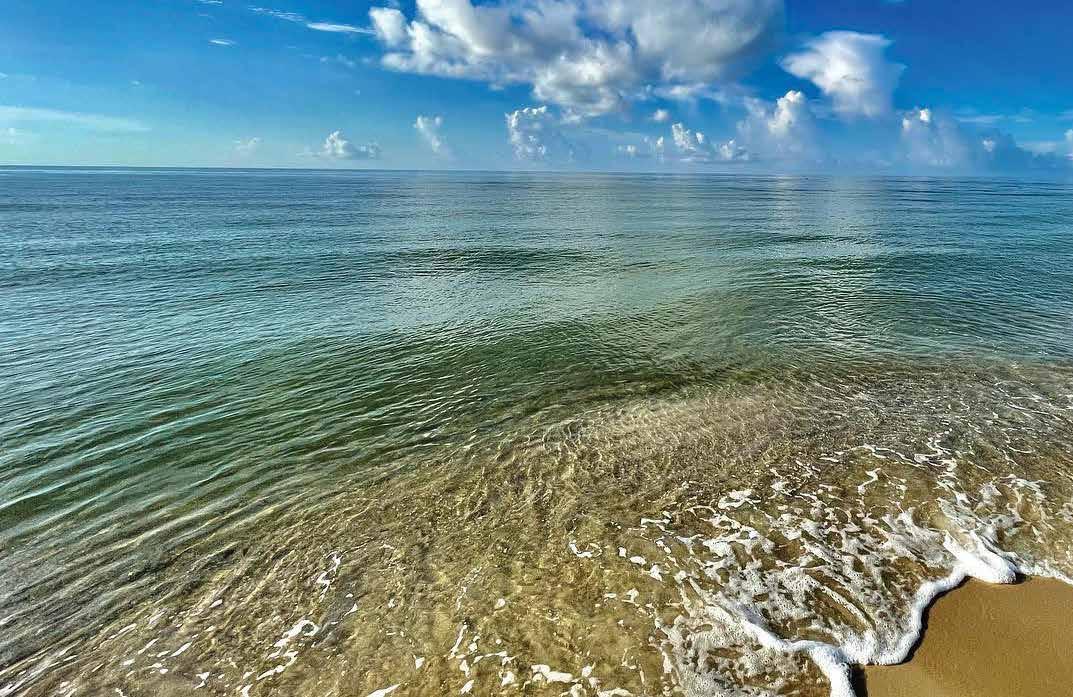
Beaches!
There are more than 250 miles of beaches in Franklin County. Somewhere along the shore you're sure to find your happy place...
point of interest
We're
pet friend ly!
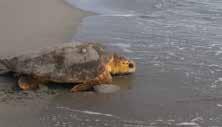
Protect the Turtles
The beaches of Franklin County are important turtle nesting sites for marine turtles that migrate annually to our beaches to nest. Holes dug on the beach and furniture left overnight can disorient and trap turtle hatchlings, and can hinder the females from coming ashore to lay their eggs. Please remove your belongings and fill in any holes prior to leaving the beach. During the summer months, Franklin County’s “Leave No Trace” Ordinance is in effect for all of Franklin County, Florida beaches. Personal items such as tents, chairs, toys, umbrellas and coolers must be removed from the public beaches between 9 p.m. and 7 a.m.
Franklin County features gulf beaches with miles of gently rolling surf, bay beaches with nature and privacy, beaches that are perfect for families, beaches that are great for fishing, beaches you can drive to and beaches you'll need a boat to enjoy. Every one of our beaches is beautiful but each one is different.
Safety First
When swimming in the Gulf of Mexico, safety should be your top priority. Franklin County, Florida uses color-coded beach flags to keep the public aware of sea conditions. Observe flag colors at each flag location before entering water. Absence of beach flags does not assure safe waters.
ST. GEORGE BEACHES
The 28 miles of St. George Island’s beaches are serene and pet-friendly. The island consistently rates as one of the top beaches in the U.S., with miles of uncrowded expanses for sunning and shelling, clear Gulf waters for swimming and fishing, and pristine marshes for wildlife viewing. Visitors can rent a quaint beach cottage, a multi-story luxury beach home, or lodge at one of the two island hotels or inns. Except for the Julian G. Bruce State Park beach, St. George Island beaches are pet-friendly for well-behaved and leashed pets.
Things To Do 30
Florida Fish & Wildlife
@clarkrat
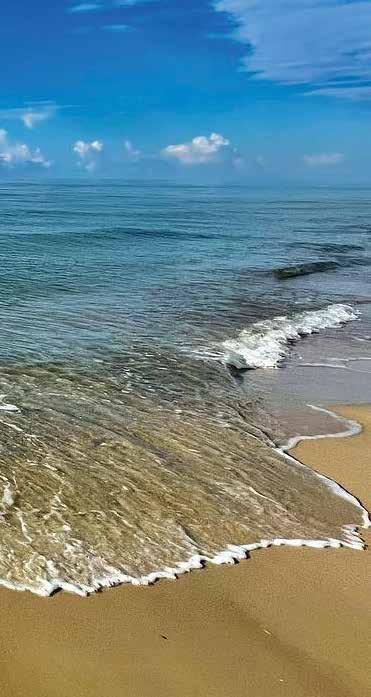
St. George Public Beach
The public beach on St. George Island is easy to find. Coming onto the island, turn right at the stop sign and then left into convenient island parking. There are bath house facilities, covered pavilions for picnics, a playground and ball court. The Cape St. George Lighthouse and Lighthouse Keeper's House are also located nearby. This beach gently slopes and, although there are no life-guards on duty, the surf requires only normal caution.
Unit Four Beach
Unit Four Beach on St. George Island is on the bay side of the island at East 6th Street and an entertaining walk for nature lovers. The only facility is a picnic table and the parking is minimal. This is an outstanding venue for birding. This is a great place to walk your dog but be sure to keep your pet on a leash and pick up after them. This beach connects to some of the most productive shallow-water oyster bars and that makes for great fishing in close.
SGI State Park Beach
St. George Island State Park beach is located at the far east end of St. George Island. Ranked as among the best in the world, this is the longest beachfront state park in Florida. There are two large beach use areas with ample parking, picnic pavilions, beach house facilities, grills and boardwalks. This beach is renowned for its soft, white sand, gentle surf and softlysloping bottom. Pull-off parking areas provide boardwalk access all along the length of the beach. Pets are not allowed on the beaches. There is an entrance fee.
East End Fishing Beach
This special-use area of the state park is located through a locked gate that requires a special permit and an extra fee. There is a five mile drive to the east end of the island beach parking area. The East End beach is for fishing only. This is one of the most popular fishing areas and it is as beautiful as it is productive. The deep currents that run through East Pass, which separates St. George Island from Dog Island, bring bait and bait eaters in great schools There are no facilities other than parking and pets are not allowed.
CARRABELLE AREA BEACHES
The Carrabelle area features two mainland bay beach areas just west of the City of Carrabelle. Both beaches feature gentle surf protected by offshore barrier islands and both are easily accessible from U.S. Highway 98. Both beaches are close to the historic Crooked River Lighthouse and Museum.
Carrabelle Beach
Located 1.5 miles west of Carrabelle on US 98. This easily-accessed, curving, white-sand beach is located just west of the City of Carrabelle on U. S. Highway 98. There is plenty of convenient parking, outdoor showers, bathroom facilities and covered picnic tables. Features several vintage cool picnic shelters with grills and restrooms. This is a very popular beach with a gently sloping bottom and calm surf. Since the beach is protected by Dog Island from heavy winds and seas, it is often the most suitable of all our major beaches for families with young children. The beach borders on St. George Sound and the water is clear and inviting.

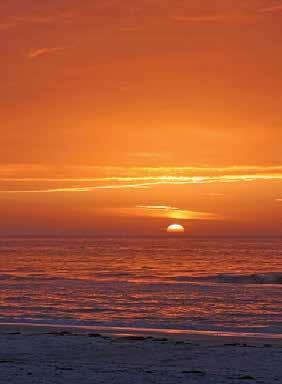

FloridasForgottenCoast.com
31
Continued on page 32
@dorwage
@ronipndr
Things To Do
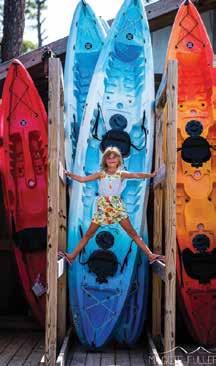
Beach
Supplies
Rent kayaks, stand-up paddle boards, bicycles, scooters, golf carts, beach chairs and umbrellas.
Beach Supplies
Scan the QR code below to link to the many beach supply and bicycle rental operations along the Forgotten Coast.

Old Carrabelle Beach
This magnificent stretch of soft sand is one of the best-kept secrets in Franklin County. Access is just west of the Carrabelle Bridge on Gulf Beach Road. There is no formal parking area and no facilities. Close to acres of grass beds, this beach offers superb fishing especially in the summer and fall months. But most folks like this lovely stretch of sand for its beauty and tranquility.
DOG ISLAND BEACHES
Dog Island is the smallest inhabited island of the chain of four Franklin County barrier islands. It is located at the eastern end of the county, just offshore from where the Crooked River merges into the Carrabelle River and then into St. George Sound. This island is small at 6.8 miles in length, accessible only by boat, ferry or airplane. The beaches here are remote and secluded.
Dog Island Beach
This beach requires boat access and then a hike. There are no public facilities or stores on Dog Island. If you want it, bring it with you. This is a beach for the adventurous. It takes an effort but it is a very rewarding effort. Dog Island beaches are known for the pristine white sand, good shelling, crabbing and shore fishing, and as a superior beach-picnic and recreational boating base.
ALLIGATOR POINT BEACHES
This narrow beach peninsula area boasts eight miles of quiet shoreline and unparalled fishing. There are two main beaches on Alligator Point and several public access areas along the beach plus two boat ramps on the bay side.
Alligator Point Beach
This beach is on the far east end of Franklin County. Turn off U.S. Highway 98 onto Alligator Point Road and follow it, curving around to the right. This beach is locally renowned for fishing. There are no public facilities and public access is limited with minimal parking.
Bald Point State Park
This state park beach is perfect for nature lovers. There is an entrance fee and there are facilities and easy parking. Because of the flow of nutrient-rich waters down the Ochlockonee River, this beach has an individual personality. Depending on flow and up-river rains, the water can look muddy but it supports a great deal of life. Shallow water oyster beds are magnets for fish and birds. Birders in particular will enjoy the range of shore birds and wading birds. Wear hard-soled footwear - there are sharp oyster shells. Bald Point offers access to two Apalachee Bay beaches for swimming, sunbathing, fishing, canoeing, kayaking and windsurfing. Facilities include a fishing dock and picnic pavilions.
ST. VINCENT ISLAND BEACHES
St. Vincent Island is a 12,300-acre undeveloped barrier island owned by the Federal Government and managed as a National Wildlife Refuge. The island is a haven for endangered wildlife. The island is accessible only by boat. The gulffront beaches here are secluded and protected. St. Vincent features a unique bayside beach that is beautiful and remote.
Tahiti Beach
Tahiti Beach got its name because its remarkable beauty is reminiscent of a South Seas paradise. Located on the easternmost end of St. Vincent Island, this lovely hide-a-way requires a boat for access. Due to sometimes strong currents in West Pass, this is not recommended for swimming. But the beach is perfect for shelling, sun worshiping and, for the more adventurous, a good base from which to explore more of the island’s varied wildlife.
32
Beaches, continued from page 31
Maggie Fuller
We're Pet Friendly!

Franklin County offers some of the best beaches to bring your dog.
Book a beachside cottage, and spend your days basking, while your dog runs and splashes in the surf. The area features many pet friendly accommodations and dogs who love waves will love the safe and gentle surf of the Gulf of Mexico.
Franklin County requires your dog to be on a leash when you visit the beaches of Franklin County. The state park beaches on St. George Island and Alligator Point have specific rules on where your friends can visit - please check before you go. Apalachicola features a fenced-in dog park.
Water Sports
Several local outfitters offer boat, kayak and paddleboard rentals that you can try with your furry friend. All of them would be happy to recommend calm water locations to enjoy with your pet.
Camping
In addition to State forest and national forest primitive camping, there are a number of RV campgrounds in the county that welcome pets.
Pet Events
There are a growing number of annual pet events in Franklin County including the Mardi-Gras Pet Parade and Holiday celebration.
Pet-Friendly Lodging
Throughout Franklin County, we’ve got plenty of pet-friendly lodgings –whether you’re looking for a hotel, motel, inn, cottage, or bed and breakfast from Alligator Point to Apalachicola.
Visit FloridasForgottenCoast.com for a list of pet-friendly accommodations.
point of interest
Pet Beach Tips
• Your four-legged friend must be leashed at all times – so plan ahead!
• Don’t leave a mess behind. Don’t count on the beach supplying waste bags, so bring your own and be diligent about cleaning up.
• Do check the ocean for jellyfish and stingrays. A sting to your dog will be sure to ruin both his and your experience.
Restaurant Tips
• Dogs should be kept close to or under the table while owners are eating – and stay out of the way of restaurant staff.
• Bring your own doggie bowl or ask the waiter for a paper or plastic bowl or cup for water if necessary. Pets are not permitted to eat or drink out restaurant glasses or dishes, unless they are disposable.
• Dogs should remain on leash at all times.
Lodging Tips
• Bring your own dog supplies
• Check hotel policies before arriving– if there is a pet fee, be aware of it before you stay so you’re not surprised when checking out and paying.
33
FloridasForgottenCoast.com
@ oliverthegoldensnitch
Things To Do

Fishing Tournaments

Franklin County features several important fishing tournaments throughout the year.
June features the annual Fisherman’s Choice Youth Fishing Tournament. An annual family-oriented tournament geared toward helping kids develop a love for fresh and saltwater fishing. June also sees the annual Big Bend Saltwater Classic. All of the proceeds are used to develop artificial reefs in the Northeastern Gulf of Mexico.
July features the annual C-Quarters Youth Fishing Tournament and during August Carrabelle hosts the annual Kingfish Shootout.
Visit FloridasForgottenCoast.com for details on upcoming fishing tournaments throughout the year.
St. George Island, Apalachicola, Carrabelle, Eastpoint and Alligator Point are renowned for both fresh and saltwater fishing opportunities. The unique topography of the Apalachicola River and Bay systems supports diverse marine habitat that attracts a wide variety of fish species to the area.
Freshwater Fishing
Franklin County is a freshwater fisherman’s paradise. Miles of freshwater creeks, sloughs and rivers flow through the North Florida wilds and empty into nutrient-rich Apalachicola Bay and surrounding waters. It’s a nature nursery here! Depending on the time of year, tide and weather, fishermen trolling the fresh and brackish backwaters here can expect to land redfish, trout, largemouth bass, bream, snook and catfish. Depending on your situation, you can fish the freshwater areas by boat, kayak or on foot – you’ll be surprised how accessible the waters are here.
Beginning at the easternmost end of Franklin County, the Ochlockonee River features many freshwater fishing spots along the river banks - be sure to check out underneath the western edge of the Ochlockonee River Bridge. The Bald Point State Park is a well known fishing spot – the brackish bayside shallows are lined with a maze of oyster bars and channels that go from shallow to deep, depending on the tide. Heading west to Carrabelle, head up New River and explore the Tate’s Hell State Forest where you’ll find nearly a dozen boat ramps and kayak/canoe launches to put you close to the action. Further west, the Apalachicola River system and its distributaries, including the St. Marks River, Little St. Marks
River, and East River, are also freshwater fishing havens. Shoreline access to this river system is available from the public docks on the waterfront in Apalachicola and at the City Dock (Ten-foot Hole) under the Hwy. 98 Bridge. Public boating access points to all freshwater rivers and creeks can be found here.
Saltwater Fishing
Whether you’re ready to head offshore in search of grouper, snapper or shark or you’re more into shallow skinny water fly-fishing, saltwater fishing in Franklin County is all about the action. No matter what time of year you gear up, there’s usually always something biting in the brackish bays, grass flats and offshore.
You can enjoy the Franklin County saltwater piscatorial pursuit from shore, boat or kayak. There are four fishing piers here and more than 40 boat ramps and kayak/canoe launches. Beach fishing is particularly popular on the east end of the Dr. Julian G. Bruce St. George Island State Park and from the beach at Bald Point State Park in the extreme eastern end of the county. Carrabelle is the area’s undisputed recreational fishing haven. Three pristine rivers converge here and connect with the Gulf of Mexico, providing access to salt and freshwaster fishing grounds.
Continued on page 36
34
@meganfrommississippi
Palmer Philyaw
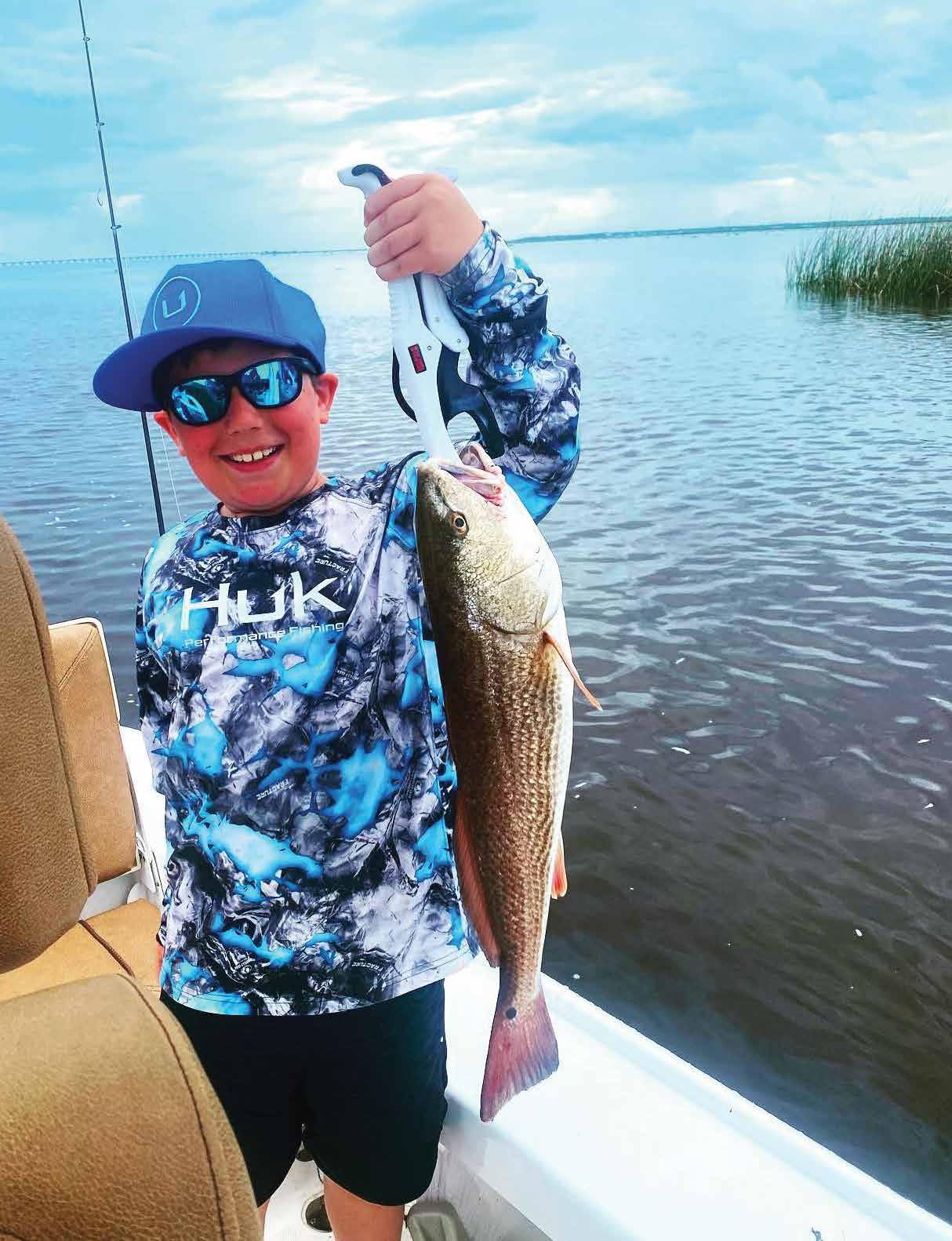
Whether its in freshwater or in saltwater, you’re sure to land the big one here!
Fishing
FloridasForgottenCoast.com 35
@capt_ld_hatfield
Things To Do

Fishing, continued from page 34
Tarpon, redfish, grouper, snapper, trout and cobia are just a sample of what you’ll land.
Hiring a guide is probably the best way to safely enjoy this high-energy saltwater fishing experience. Need some dockage, tackle, guide or advice? There are several marinas and boat rentals, fishing guides and bait and tackle shops just waiting to help.
Fishing Guides
Scan the QR code below to link to charter and tour guides to book your next fishing or sightseeing trip.

Bait and Supplies
Scan the QR code to link to Bait and Tackle shops along the Forgotten Coast.

Boat Rentals
Scan the QR code to link to boat rentals along the Forgotten Coast.


Fishing FAQs
What are the fishing regulations in Florida?
Fishing regulations, bag limits and size limits vary greatly depending on the season. For the most up-to-date information, visit myfwc.com/ fishing/
Do I need a fishing license?
Yes, Florida residents and visitors are required to have a freshwater fishing license or saltwater fishing license when engaged in fishing activities. For more info about licenses, visit https://myfwc.com/fishing/
Where can I get a fishing license?
Licenses and permits are available online at GoOutdoorsFlorida.com, in person at a license agent or tax collector's office or by calling tollfree 888-FISH-FLORIDA.
What are the fishing tides today?
or the latest tide info for Franklin County visit www.tideschart.com/ United-States/Florida/Franklin-County/
36
Maggie Fuller
Brett Martina
Boating
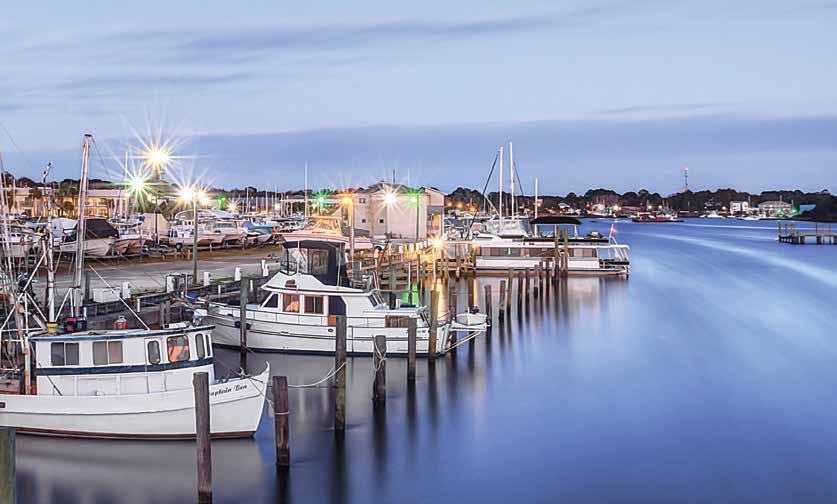
Marinas
Commercial marinas here feature a variety of amenities. Scan the QR code to link directly to learn more.
Apalachicola
Scipio Creek Marina
301 Market Street
850-653-8030
scipiocreekmarina.com
Water Street Hotel & Marina
329 Water Street
850-653-3700
waterstreethotel.com
Apalachicola Marina, Inc.
119 Water Street
850-653-9521
Apalachicola Boat Slips and Ramp
317 Water Street
850-653-6279
apalachicolaboatslips.com
Battery Park Marina
1 Bay Avenue
850-653-9319
cityofapalachicola.com
Carrabelle
Dockside Marina
292 Graham Drive
850-697-3337
The Moorings Marina
1000 Highway 98
850-697-2800
mooringsatcarrabelle.com

C-Quarters Marina
501 Highway 98
850-697-8400
c-quartersmarina.com
Carrabelle River Marina
275 Timber Island Road
850-720-1029
carrabellerivermarina.com
Carrabelle Boat Club
1570 West Highway 98
850-697-5500
carrabelleboatclub.com
Carrabelle Marina
803 NW Avenue A, Highway 98
850-697-3351
carrabellemarina.com
Lanark by the Sea Boat Club
2364 East Highway 98
850-510-4671
lanarkboatclub.com
Alligator Point
Alligator Point Marina
1648 Alligator Drive
850-349-2511
alligatorptyacht.com
Boat Ramps
Alligator Point
Leonard’s Landing
East Highway 98, St. Teresa
Ochlockonee Boat Ramp
Ochlockonee Bay Bridge
Alligator Drive Beach Boat Ramp
Alligator Drive
Sun N Sand Boat Ramp
Sun N Sand Boulevard
Rio Vista Boat Ramp
Rio Vista Drive, St. Teresa
Apalachicola
Abercrombie Boat Ramp
Pine Log Road
Mill Pond on Scipio Creek
Market Street
Scipio Creek Boat Basin
Market Street
Battery Park Marina
Bay Avenue
Seafood Landing Park
628 Highway 98 West
Carrabelle
Hwy 98 Boat Ramp
Highway 98
Carrabelle Riverwalk & Wharf
Marine Street
Timber Island
Timber Island Rd.
Eastpoint
Indian Creek
93 North Bayshore Drive
Patton Drive
340 Patton Dr.
St. George Island
St. George Island Boat Ramp
1000 Franklin Blvd.
St. George Island State Park
37
FloridasForgottenCoast.com
Forrest Wesson
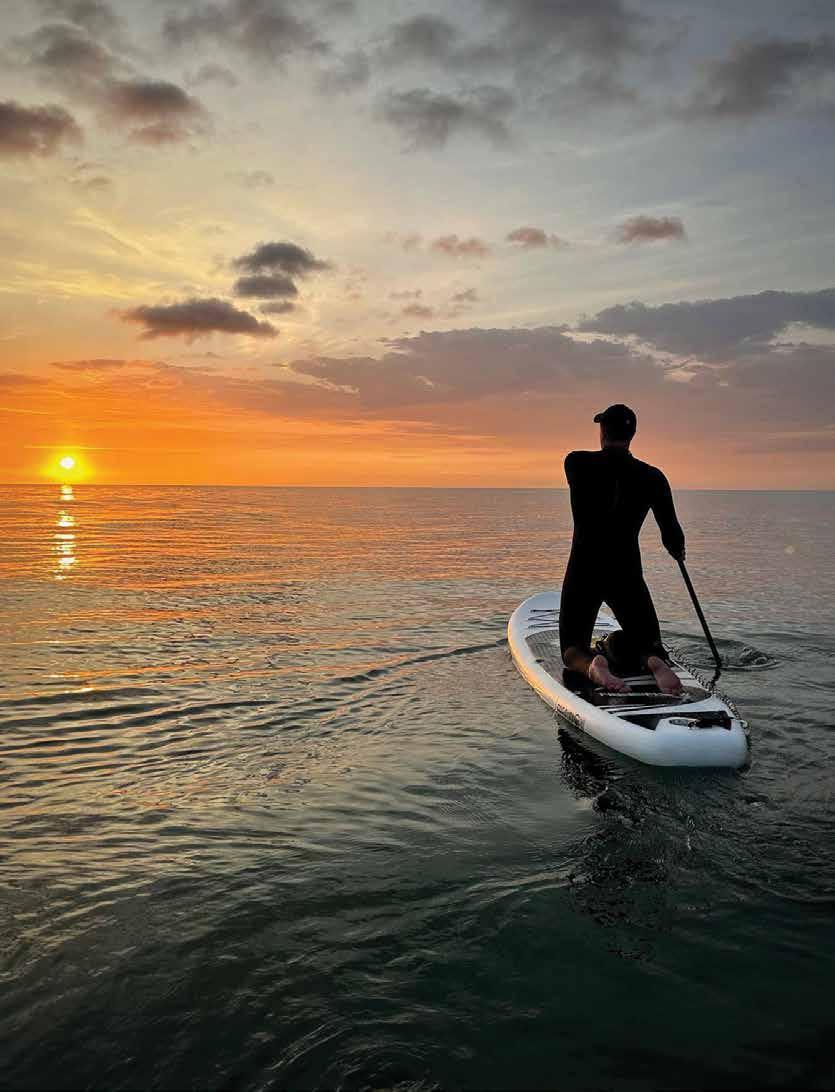
Paddling
38
Things To Do
@andy.kilkenny

Franklin County features miles of rivers, creeks and coastal shallows to explore by canoe or kayak.
Apalachicola River Paddling Trail
The Apalachicola River Paddling Trail System is actually broken into 11 separate smaller trail sections. Paddlers at all levels of ability will enjoy these 11 canoeing and kayaking trails - nearly 100 miles through the swamps of the Apalachicola River. Distances range from short, easy trips to multi-day river trips flowing into open bays of the Gulf of Mexico.
Big Bend Saltwater Paddling Trail
The 105-mile Big Bend Saltwater Paddling Trail is part of a much larger saltwater paddling trail called the Florida Circumnavigational Saltwater Paddling trail (CT) that stretches from the Alabama border around the tip of Florida and up to the Georgia border. Overnight camping trips along the Big Bend trail requires an FWC camping permit and the official trail is open from September 1 through June 30.
The Florida Circumnavigational Saltwater Paddling trail (The CT)
The premiere paddling trail in Florida is the 1550-mile, Florida Circumnavigational Saltwater Paddling Trail, or the "CT" for short. Franklin County's portion of the CT is located in sections 4 and 5, the Forgotten Coast and Crooked River.
Apalachicola National Forest
The Apalachicola National Forest nearly 3,000 acres of water within its boundaries. Six watersheds within the Apalachicola provide an abundance of fresh water streams, rivers, lakes, and natural springs. Remote waterways await the avid paddler looking for a multi-day journey through the Apalachicola National Forest following the winding Sopchoppy River or the remote New River. Paddlers can also explore the banks of the Apalachicola River, and use a canoe or kayak for a closer look at the major lakes in the forest, including Wright Lake, Silver Lake, and Camel Pond.
Tate's Hell State Forest
Tate’s Hell State Forest covers more than 200,000 acres of public land. It is bordered on the west by the Apalachicola River and on the east by the Ochlockonee River. There are 35 miles of rivers, streams and creeks available for canoeing, kayaking, boating and fishing. A concrete boat launch site is located at Cash Creek, with additional launch sites available at locations throughout the forest.

Kayak/Canoe Launch
• Sand Beach Recreation Area Kayak Launch
Sand Beach Off Hwy 65, Eastpoint
• Bald Point State Park Kayak Launch End of Bald Point Road
• Fort Gadsden Creek West Primitive Access Forest Road 34 West off Hwy 65 south of bridge
• Crooked River Recreation Site #1 Primitive Boat Launch, Crooked River Road, Carrabelle
• Crooked River Recreation Site #2 Primitive Boat Launch, Crooked River Road, Carrabelle
• Deep Creek Camp Canoe Access, Deep Creek Road, Carrabelle
• Tate’s Hell Dew Drop Camp Canoe Access Tate’s hell Forest, Carrabelle
• Tate’s Hell Doyle Creek Camp Canoe Access Doyle Creek Road, Carrabelle
• Dry Bridge Camp Canoe Access Dry Bridge Road, Carrabelle.
• Gully Branch Road Canoe Access Gully Branch Road, Carrabelle.
• Miller Landing, Gully Branch Road, Carrabelle.
• Tate’s Hell State Forest, New River Camp #1-8 Canoe Access West Double Road, Carrabelle.
• Tate’s Hell State Forest – Pope Place • Campsite Tate’s Hell State Forest – Rake Creek Camp Boat Launch, Rake Creek Road, Carrabelle
• Tate’s Hell State Forest – Sunday Rollaway Warren Bluff Road, Carrabelle
• Tate’s Hell State Forest - Warren Bluff Camp Warren Bluff Road, Carrabelle.
• Tucker Lake Canoe Launch (Bald Point State Park), Range Road, Carrabelle
39 FloridasForgottenCoast.com
State Forest Service
Florida
Colin Hackley, Visit Florida
Things To Do
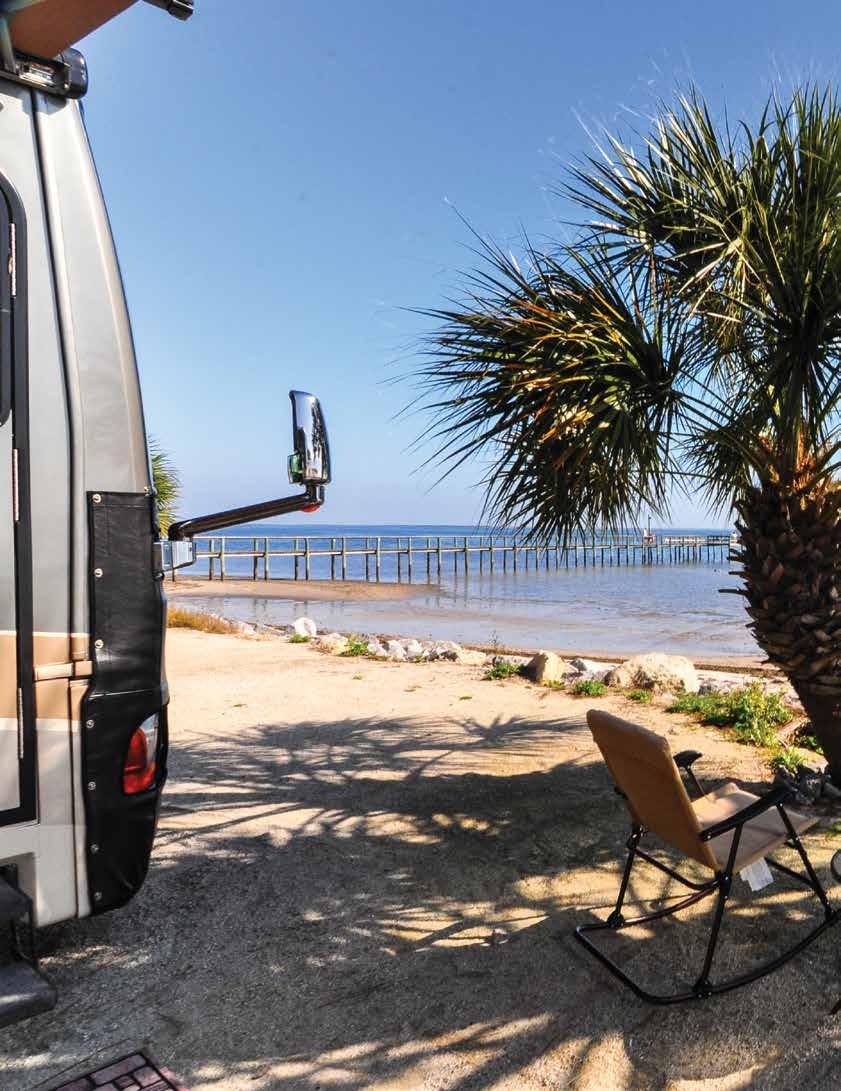
Camping
Camping facilities here range from luxury waterfront RV parks to primitive forest sites.
40
Bob Zumwalt

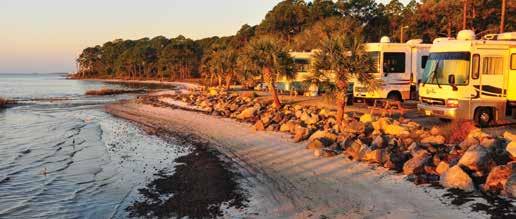
Whether it be primitive camping in the State or National Forest, beach camping at the Dr. Julian G. Bruce St. George Island State Park or full service RV park lodging, Franklin County offers unsurpassed beauty and wildness vista not found elsewhere in the State.
There are more than 40 camping areas and campgrounds in Franklin County ranging from luxury waterfront RV parks to primitive woods sites. Many feature boat launches and nearby hiking opportunities. Most of the wilderness camping areas are located within either the Tate’s Hell State Forest, the Apalachicola National Forest or the Florida State Park system.
One of Franklin County’s premier camping facilities is located on St. George Island at the Dr. Julian G. Bruce St. George Island State Park. The park is located at the eastern tip of St. George Island. The 2,023-acre park has several miles of undeveloped and uncrowded beaches. The Gulf of Mexico is on one side with Apalachicola Bay on the other. The campground has 60 campsites with water and electricity. Primitive camping at Gap Point is accessible only by foot, canoe or kayak by way of a 2.5-mile Gap Point Trail.
There are a growing number of full service RV campgrounds in the county including the Sportsman Lodge and Coastline RV Resort in Eastpoint, Carrabelle Beach RV, Sunset Isle RV and Ho-Hum RV Park in Carrabelle. Utility hookups are available.

RV Parks
Carrabelle
Carrabelle Beach RV Resort
1843 W Hwy 98
850-697-2638
carrabellebeach.rvcoutdoors.com
Sunset Isle RV & Yacht Club Resort
260 Timber Island Rd.
850-556-0051
sunsetislerv.com
Ho-Hum RV Park
2132 E. Hwy 98
850-697-3926
hohumrvpark.com
Eastpoint
Coastline RV Resort
957 Highway 98
850-799-1016
stay@coastlinervresort.com
Coastline Campground
897 Hwy 98
850-670-8970
Sportsman's Lodge
99 North Bayshore Drive
850-670-8423
sportsmanslodgeonthebay.com
41
FloridasForgottenCoast.com
Bob Zumwalt
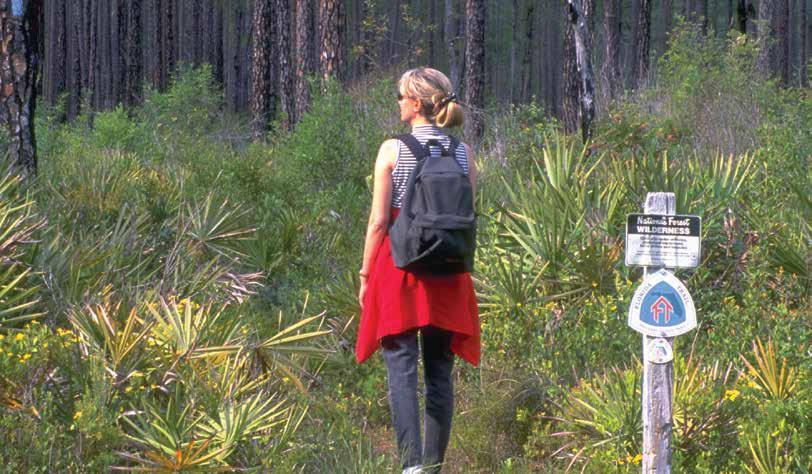
Camping Areas
Carrabelle
Carrabelle Beach RV Resort
1843 W Hwy 98
850-697-2638
carrabellebeach.rvcoutdoors.com
Sunset Isle RV & Yacht Club Resort
260 Timber Island Rd.
850-556-0051
sunsetislerv.com
Ho-Hum RV Park
2132 E. Hwy 98
850-697-3926
hohumrvpark.com
Eastpoint
Coastline Campground
897 Hwy 98
850-670-8970
Sportsman's Lodge
99 North Bayshore Drive
850-670-8423
sportsmanslodgeonthebay.com
St. George Island
St. George Island State Park
1900 E. Gulf Beach Dr. 850-927-2111
floridastateparks.org
Forest Camp Sites
Tate's Hell State Forest
850-697-3734, 850-643-2282
floridaforestservice.com
Apalachicola National Forest
850-643-2282
fs.usda.gov/apalachicola
Hiking
With thousands of protected acres to explore, hiking opportunities abound in Franklin County.
Tate's Hell State Forest
At Tate’s Hell State Forest, the High Bluff Coastal Hiking Trail winds six miles through the forest, often paralleling St. George Sound. Informative visitor education exhibits are located along the trail and cover fire, coastal scrub ecosystems and the turpentine industry. Of special note, hikers can see the natural phenomenon of the dwarf cypress trees which grow no more than 15 feet tall even though they are 150 years old. Among the most unusual plants in the forest are the native pitcher plants.
Apalachicola National Forest
The Apalachicola National Forest is the largest forest in Florida with more than 570,000 acres. The forest features nearly 70 miles of hiking as part of the Florida National Scenic Trail. There you’ll see wildflowers, sinkholes, open prairies and scenic creeks and lakes.
St. Vincent National Wildlife
Refuge
The St. Vincent National Wildlife Refuge is a 12,350-acre undeveloped barrier island, located 22 miles offshore
from Apalachicola. Here, hikers can explore the island’s 14 miles of beaches and 80 miles of sand roads, often without seeing a manmade structure or even another person. Access is by boat or ferry only.
Julian G. Bruce St. George Island
State Park
The Dr. Julian G. Bruce St. George Island State Park boasts nine miles of undeveloped beaches and high dunes, surrounded by the Gulf of Mexico and Apalachicola Bay. Occupying nearly 2,000 acres, park terrain is a combination of sandy coves, salt marshes, shady pines and oak forest. Inside the state park, a two-mile marked trail along the bayside is especially popular among birders, and a series of trails and boardwalks throughout the park provides many wildlife sighting opportunities.
Bald Point State Park At the easternmost end of the county Located on Alligator Point where Ochlockonee Bay meets Apalachee Bay is Bald Point State Park. Bald Point’s coastal marshes, pine flatwoods and oak thickets foster a diversity of biological communities that make the park a popular destination for hikers. A newly constructed observation boardwalk overlooks prime areas for viewing rare Florida black bears, which occasionally swim at the beach. This area also is popular for bird watching.
42
Things To Do
Apalachicola National Forest

Golfing
St. James Bay Golf Resort is an 18-hole championship golf course designed in coordination with the Audobon Society blending nature and lifestyle into a unique coastal golf experience.
The St. James Bay Golf Resort is located six miles east of Carrabelle and is Franklin County’s premier coastal golf experience. Designed by renowned course designer Robert Walker in coordination with the Audobon Society, this 18-hole, par-72 championship course is surrounded by 90 acres of unspoiled beauty. Wetlands and water hazards are present at every hole, and the course winds through a pristine wetlands environment. The practice facility
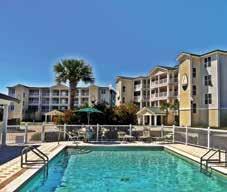


includes a full driving range and two putting greens. Amenities include a pro shop with snack bar, golf apparel and rental clubs, as well as the Crooked River Grill restaurant. A PGA golf pro is there for professional instruction.
Course-front Amenities
St. James Bay Golf Resort offers two lodging options ranging from clubhouse villas to luxury condominiums. Both golf and non-golf accommodation packages are available.
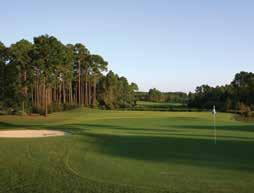
FloridasForgottenCoast.com 43
Things To Do

Birding
Break out your binoculars and enjoy Franklin County’s birds. Here are some tips and locations to make the best of your birding experience.
Franklin County offers outstanding birding opportunities year round.
John B. Spohrer
In the spring this is first land for the trans-gulf migrants and the different species of shore birds. Warblers and song birds are found in a dizzying array on our beaches and barrier islands. During the summer Franklin County is home to many nesting species ranging from rails in the salt marsh to osprey and eagles in the highest trees. The fall brings the migration from the north as the cool weather pushes masses of birds to the south followed by a world-renowned gathering of raptors preying on them. Winter brings many species including ducks, loons and other water birds.
Whenever you're in Franklin County it's a good time to break out your binoculars and enjoy the wonderful outdoor world of birds. Here are the top spots.
St. George Island State Park
Located on the east end of St. George Island. There are over 300 species listed on the St. George Island State Park birding list and there are interesting birds there at all times of the year.
During the spring nesting shore birds include the American Oystercatcher and
the endangered Snowy Plover. During spring, summer and fall Royal Terns, Caspian Terns, Least Terns and Forster's Terns can be observed diving in the surf.
The hot times of the year are famous in birding communities for the neotropical migrants found especially in the migrant trap at the Youth Camp area of the park. Here you may see Indigo Buntings, Orchard Orioles, Painted Buntings, Scarlet Tanagers, Rose-breasted Grosbeaks, Prairie Warblers and Summer Tanagers.
Wright's Lake Recreational Area
Apalachicola National Forest. Located on Hwy 65 north of Hwy 98. This vast national forest is home to countless birds and is one of the crown jewels of Franklin County.
One of the best places here to add some uncommon species to your list is the area around Brickyard Road and Wright's Lake. Signage on Hwy 65 directs you to the Wright's Lake Recreational area. May through mid July is peak for the longleaf pine specialists like Bachman's Sparrow and the endangered Red-cockaded Woodpecker.You may also spot the Red-bellied Woodpecker, Downy Woodpecker, Pileated Woodpecker, Yellow-bellied Sapsucker, Redtailed Hawk and Red-shouldered Hawk.
Bald Point State Park Located on the far eastern side of Franklin County at 146 Box Cut Road, Alligator Point. Bordering on the Ochlockonee River to the north and the Gulf of Mexico on the east this park offers a large array of habitats: Freshwater Swamp, Freshwater Marsh/Wetlands, Pines, Lake/Pond/Impoundment, Scrub, Hardwoods/Mixed Forest, Marine/ Bay, Salt Marsh, Beach/Dune. Some of the best times are September 1 - October 15 and April1 - May 10. Spot neotropical migrants like the American Redstart, Bobolink, Black-and-white Warbler and Yellow-throated Vireo. Wintering species may include the Hooded Merganser, Bonaparte's Gull and Common Loon.
Millender Site, Eastpoint Located on St. George Sound at Patton Drive and Millender Street. This compact site offers bay, salt marsh and oak canopy habitats. Spring and fall migrants include the neotropical migrants. This spot is dependable for Indigo Bunting, Blue Grosbeak, Great-crested Flycatcher, Least Flycatcher, Yellow-rumped Warbler and Rose-breasted Grosbeak especially in the spring . Water birds, like the Red-breasted Merganser and Bufflehead, are common in the winter months.
44
John B. Spohrer photos
City of Apalachicola Almost the entire City of Apalachicola is a birder's paradise. Here the old-growth pines and oaks have been preserved and it is an oasis for birds in the desert of slash pine monoculture. The waterfront, especially Scipio Creek City Marina at the north end of town, is home to a wide variety of species including the Swamp Sparrow, Fish Crow, Spotted Sandpiper, Black-crowned Night Heron, Yellow-Crowned Night Heron, Virginia Rail and Gray Kingbird.
Sand Beach Road Observation
Tower Located in the Apalachicola River Wildlife and Environmental Area. Signage on Highway 65 directs you to the tower and boardwalk. Habitats include freshwater swamp, pines, hardwoods/mixed forest, marine/bay, salt marsh and mudflats. This site will offer you beautiful views as well as good birding. Along the shore line you may spot Clapper Rails, Spotted Sandpiper and Willet. Bald Eagles nest here and Osprey can be seen diving for fish from March through November. Migrating waterfowl including the Blue-winged Teal and Lesser Scaup, pass through Blount’s Bay.
Old Carrabelle Beach Gulf Beach Road, just west of the City of Carrabelle. This is a large, beautiful birding site favored among local birders and beach

walkers. A stroll down the beach to the east leads you to an area of shallow oyster beds and fertile birding. Spring through fall is good for Black Skimmers, Ruddy Turnstones, Sanderlings, Short-billed Dowitchers and Marbled Godwits.
Dwarf Cypress Boardwalk Tate's Hell State Forest. Located about five miles north of Highway 98 on State Highway 65. Signage will direct you to the boardwalk. This is another birding site that offers a great view. Cooper's Hawks, Broad-wing Hawks and Merlin soar over the dwarf cypress forest. Spring and fall species may include Red-bellied Woodpeckers, Pileated Woodpeckers, Pine Warblers, Blackpoll Warblers, Hooded Warblers and Little Blue Herons.
St. George Island & Eastpoint
Fishing Piers Located parallel to the St. George Island Bridge these old bridge terminals jut six- tenths of a mile into the Apalachicola Bay. A walk down either of these structures will put you square in the middle of the bay habitat of an extraordinary number of species. Caspian Terns, Sandwich Terns, Forster's Terns, Royal Terns, Least Terns and Gull-billed Terns nest on the old causeway between the two piers. In the waters around the piers you may spot over-wintering waterfowl including Common Loons, Red-breasted Mergansers, Buffleheads and Canvasbacks.
St. Vincent National Wildlife
Refuge Located off the western-most shore of Franklin County, this large barrier island is a wonderful birder's adventure, but probably best explored with a guide. There are five fresh-water lakes in the interior of the island which are best explored by kayak. A tremendous number of species can be found there including the Wood Duck, American Wigeon, Pide-billed Grebes, Northern Shoveler, Hooded Merganser and American White Pelican. Shore birds include the Blackbellied Plover, Black-necked Stilt, Least Sandpiper, and American Woodcock. The interior mixed forest may shelter Yellow Warblers, Yellow-billed Cuckoos, Northern Flickers, Carolina Wrens, nd American Goldfinch. Wading birds including the Tricolored Heron, Little Blue Heron, Great Egret, Great Blue Heron, occasionally the related Great White Heron and Reddish Egret can be observed. There are many active Bald Eagle and Osprey nests.


45 FloridasForgottenCoast.com
Things To Do

Parks
Alligator Point
Bald Point State Park
146 Box Cut Road 850-349-9146
floridastateparks.org
Some of the most picturesque areas along north Florida’s Gulf Coast are found here. Located on Alligator Point.
Apalachicola
Chapman Botanical Gardens
177 Fifth Street 850-653-1209
floridastateparks.org
The Botanical Gardens honor Dr. Alvin Chapman. Enjoy the butterfly garden, other botanical features and walkways.
Riverfront Park
Water Street
Set on the Apalachicola River where fishing boats dock, this park provides the setting for many community events.
Scipio Creek Boat Basin
479 Market Street
Locally known as the Mill Pond, it is a commercial fishing marina and park.
St. Vincent Island National Wildlife Refuge Visitor Center 5th Street 850-653-8808
fws.gov/saintvincent.org
The St. Vincent Island National Wildlife Refuge Visitor Center features interpretive displays and information about St. Vincent Island.
Lafayette Park
Avenue B
Renovated in 1992, it is now the site of open-air concerts and weddings and has interpretive signage, picnic tables, children’s playground and fishing pier.
Battery Park Marina
Bay Avenue
Battery Park is located at the foot of the John Gorrie Memorial Bridge on Bay Avenue. The public park offers boat ramps, fishing piers and children’s playground.
The parks of Florida’s Forgotten Coast provide the perfect backdrop for a day of exploring and relaxing
Seafood Landing Park
628 West Highway 98
The Franklin County Seafood Landing is located west of Apalachicola on US Hwy 98. Features a concrete boat launch ramp, covered picnic tables, grills and an interpretative maritime exhibit.
Carrabelle
Carrabelle Riverwalk & Wharf
Marine Street
Features informational kiosks, a boat ramp, handicap accessible fishing piers, fish cleaning stations and pavilion.
Carrabelle Veteran’s Park
St. James Avenue
Located on Highway 98 in the center of Carrabelle. Come and pay your respects to the veterans of Carrabelle.
Island View Park
Highway 98
A two-acre waterfront vista overlooking St. George Sound featuring signage and walkways, picnic areas.
John David Patton Wildlife Park
Highway 67
Amenities include nature trails, signage, picnic facilities and restrooms.
Sands Memorial Park
St. James Avenue
Located on the east side of Carrabelle on Highway 98. Amenities include children’s play area, pavilion and restrooms.
Tillie Miller Park
102 Northwest Avenue F
Amenities include children’s play area, tennis courts, basketball courts, picnic pavilion and restrooms.
Will Kendrick Sports Complex
1601 Ken Cope Avenue
State-of-the-art sports facility located east of Carrabelle off Highway 98. Includes ball fields, walking trail, playground and basketball court.
Eastpoint
Fort Gadsden
Apalachicola National Forest
850-643-2282
Located on the east bank of the Apalachicola River, approximately 45 minutes north of Eastpoint. Features earthen embankments and detailed interpretive kiosks, trails, river access, and picnic area.
Ralph G. Kendrick Dwarf
Cypress Boardwalk
Tate’s Hell State Forest 850-697-3734 floridaforestservice.com
The area features dwarf cypress, an observation tower with interpretive panels and picnic tables.
Indian Creek Park
93 North Bayshore Drive
Indian Creek Park is located on fiveacres on Indian Creek. Features a boat launch ramp, children’s playground and covered picnic tables.
Vrooman Park
30 Sixth Street
Features lighted ball fields for youth and adult baseball, softball, and tee-ball. Playground, picnic pavilion, walking track.
Marion Millender Park
Millender Street
Features covered picnic tables and grills.
St. George Island
Dr. Julian G. Bruce St. George
Island State Park
1900 East Gulf Beach Dr. 850-9272111
floridastateparks.org/stgeorgeisland
Voted top beach in the nation! Features birding, fishing and swimming. The park has several picnic shelters with grills, tables and nearby restrooms.
46
Events
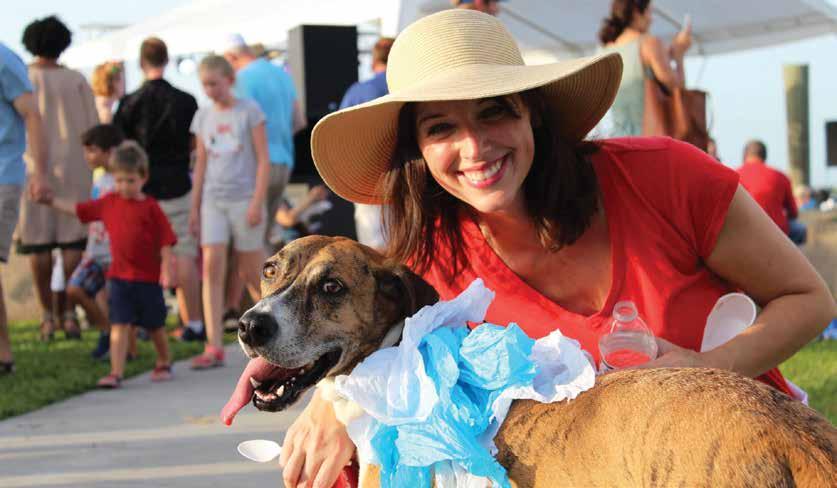
Franklin County is home to art exhibits, music concerts, theater performances, fishing tournaments, festivals and parades year round that highlight our natural resources, culture and history. Below are a few. Visit Floridasforgottencoast.com for a complete list of events.
JANUARY
Apalachicola Oyster Cookoff
Ilse Newell Concert Season Begins
Butts & Clucks BBQ Cookoff
FEBRUARY
African-American History Festival
Panhandle Players Season Performances
MardiGras Pet Parade and Annual Ball
MARCH
Chef's Sampler
SGI Charity Chili Cookoff
Camp Gordon Johnston Days
Eastpoint Charity Rib Cookoff
Carrabelle Culture Crawl
Forgotten Coast en Plein Air Paint-Out
APRIL
SGI Paint Out
Carrabelle Riverfront Festival
Antique & Classic Boat Show
Apalachicola Art & Wine Walk
SGI Brewfest
MAY
Historic Home & Garden Tour
JUNE
St. George Island Mullet Toss
Kids’ Fishing Tournament
JULY
July 4 Celebrations Countywide
AUGUST
Kingfish Shootout
OCTOBER
Lantern Festival
Ghostwalk
NOVEMBER
Florida Seafood Festival
Areawide Holiday Celebrations
DECEMBER
Holiday on the Harbor
Lighting of the Palms
Holiday Fresh Market
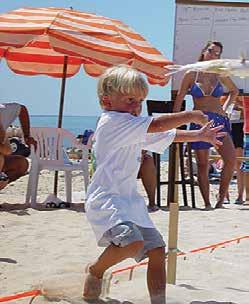

47
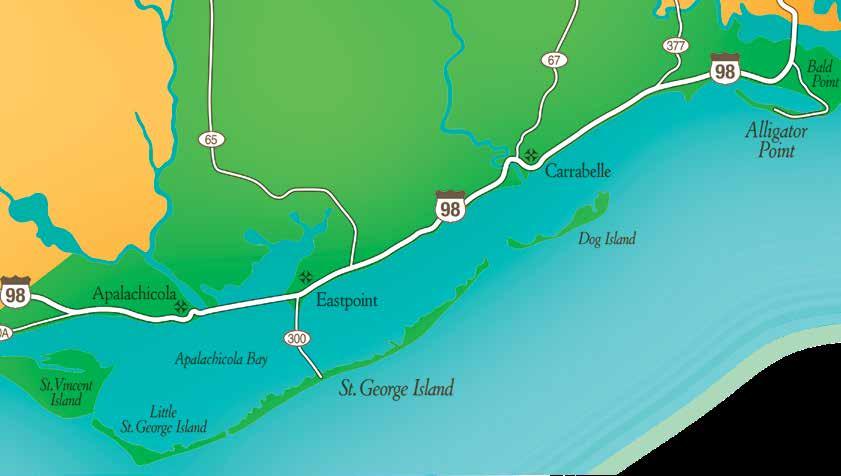
Franklin County is located along the Gulf of Mexico in Florida’s northwest panhandle, 80 miles southwest of Tallahassee and 70 miles southeast of Panama City.
MILEAGE FROM SELECTED CITIES:
Atlanta, GA 351
Memphis, TN 574
Birmingham, AL 334
Miami, FL 561
Chicago, IL 933
Montgomery, AL 244
Columbia, SC 532
Nashville, TN 525
Dallas, TX 884
New Orleans, LA 388
Detroit, MI 1055 Orlando, FL 334
Houston, TX 712
Pensacola, FL 162 Indianapolis, IN 811
St. Louis, MO 831
Jackson, MS 436
Tallahassee, FL 80
Little Rock, AR 707 Tampa, FL 298
TRANSPORTATION:
Northwest Florida Beaches International Airport 850-763-6751 Approximately one hour and 30 minutes, by car, from Franklin County.
Tallahassee Regional Airport (TLH) 850-891-7800 Approximately one hour and thirty minutes by car to Franklin County.
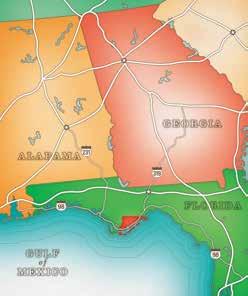
Apalachicola Municipal Airport (AAF)
850-653-8861 Located two miles northwest of downtown Apalachicola.
Carrabelle-Thompson Airport (X13) 850-697-2727 Located three miles west of Carrabelle.
St. George Plantation Owners’ Airport 850-927-2362 Located on St. George Island in the St. George Plantation development.

Produced
Floridasforgottencoast.com info@Floridasforgottencoast.com

by the Franklin County Tourist Development Council 731 Hwy 98, Eastpoint, FL 32328
Join us on Facebook, Twitter and Instagram #FloridasForgottenCoast
Franklin County



















































































 Forrest Wesson
Forrest Wesson














































